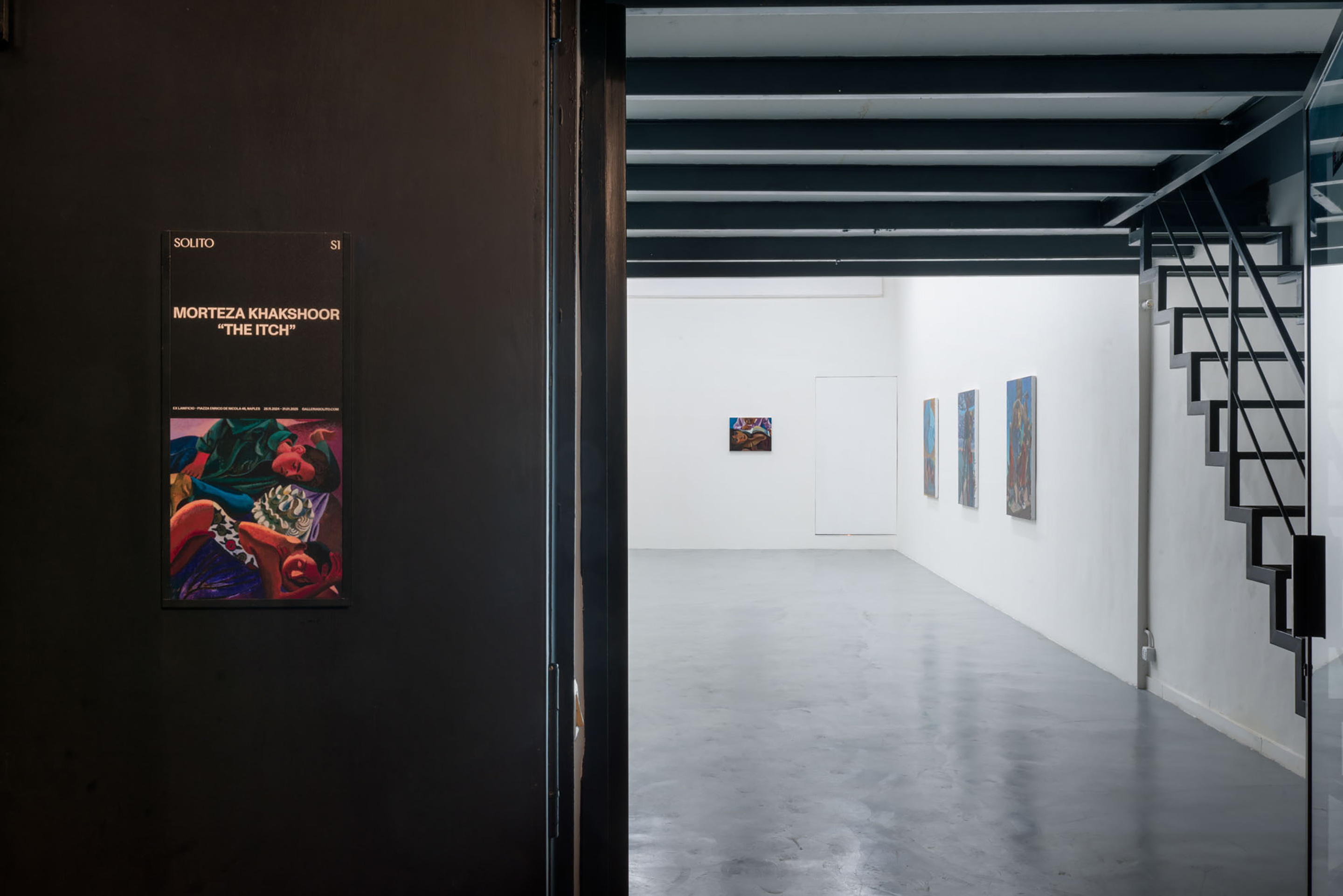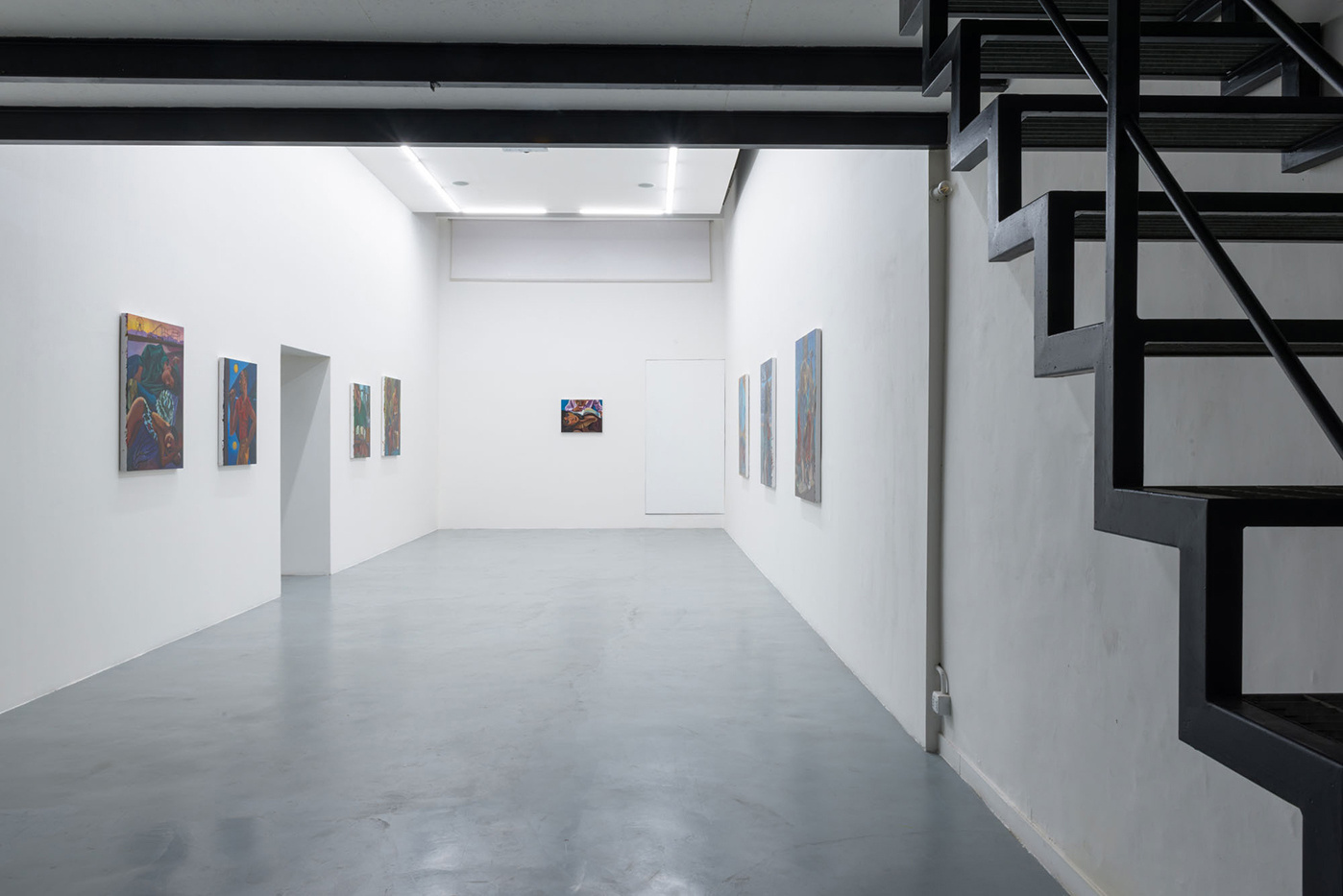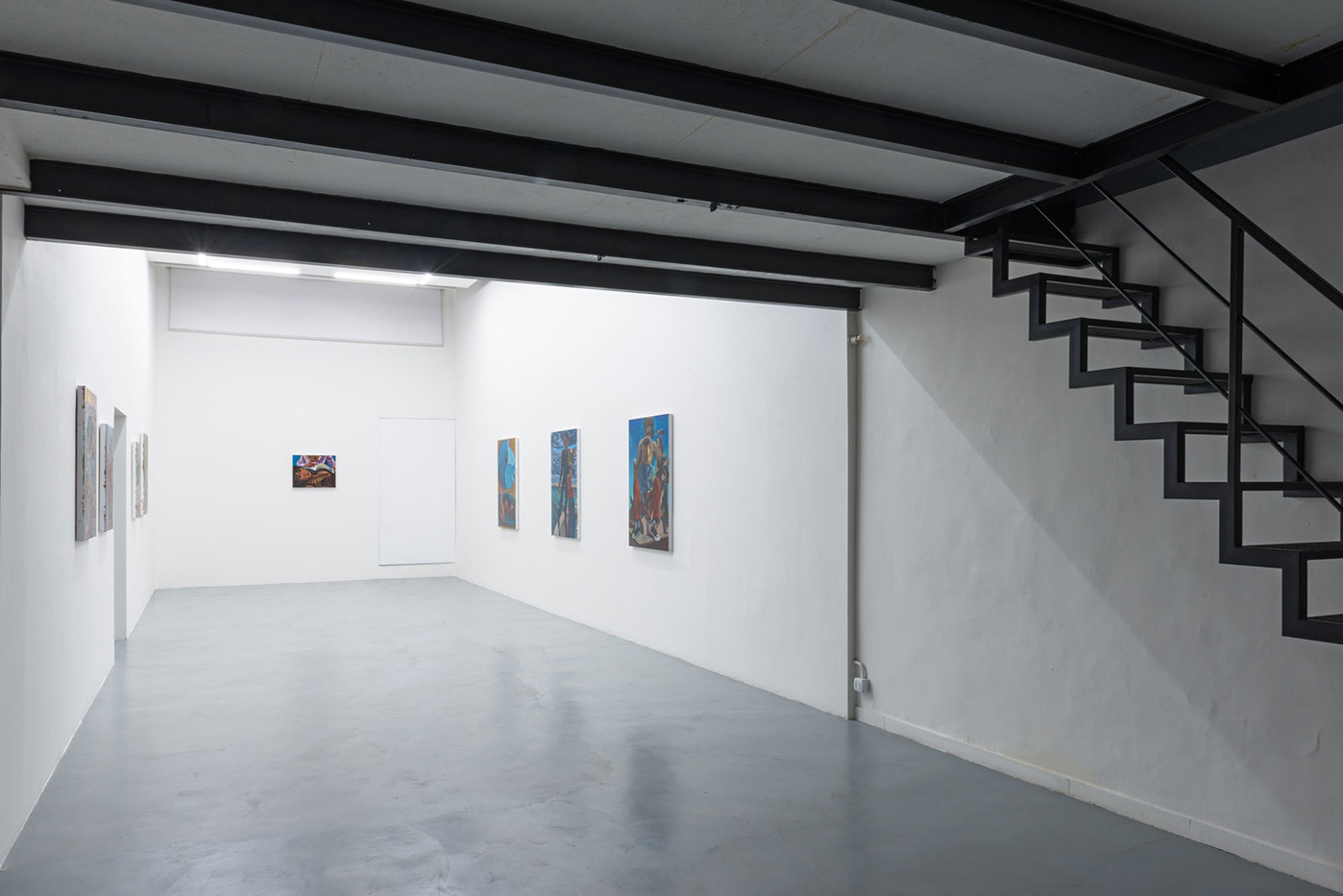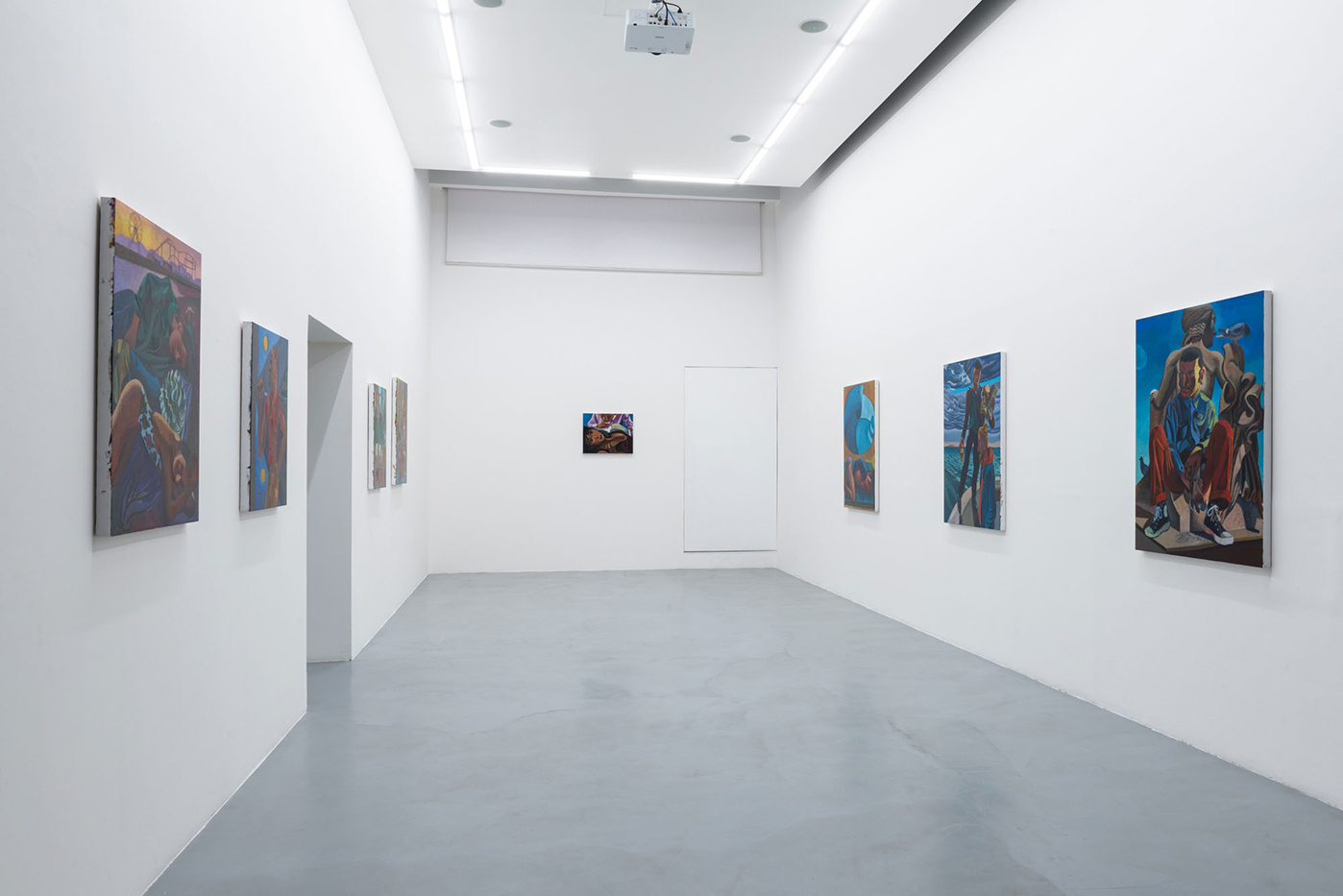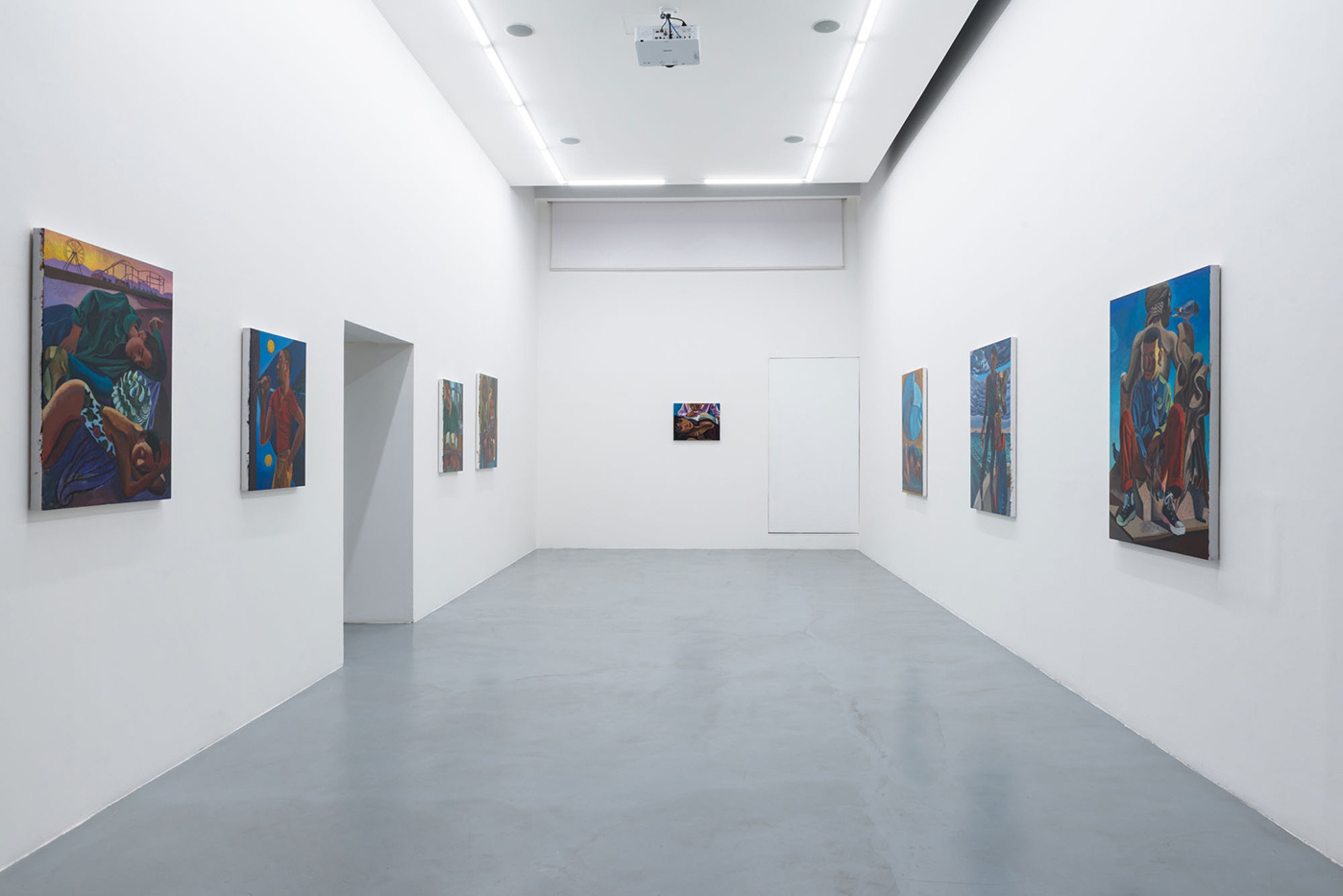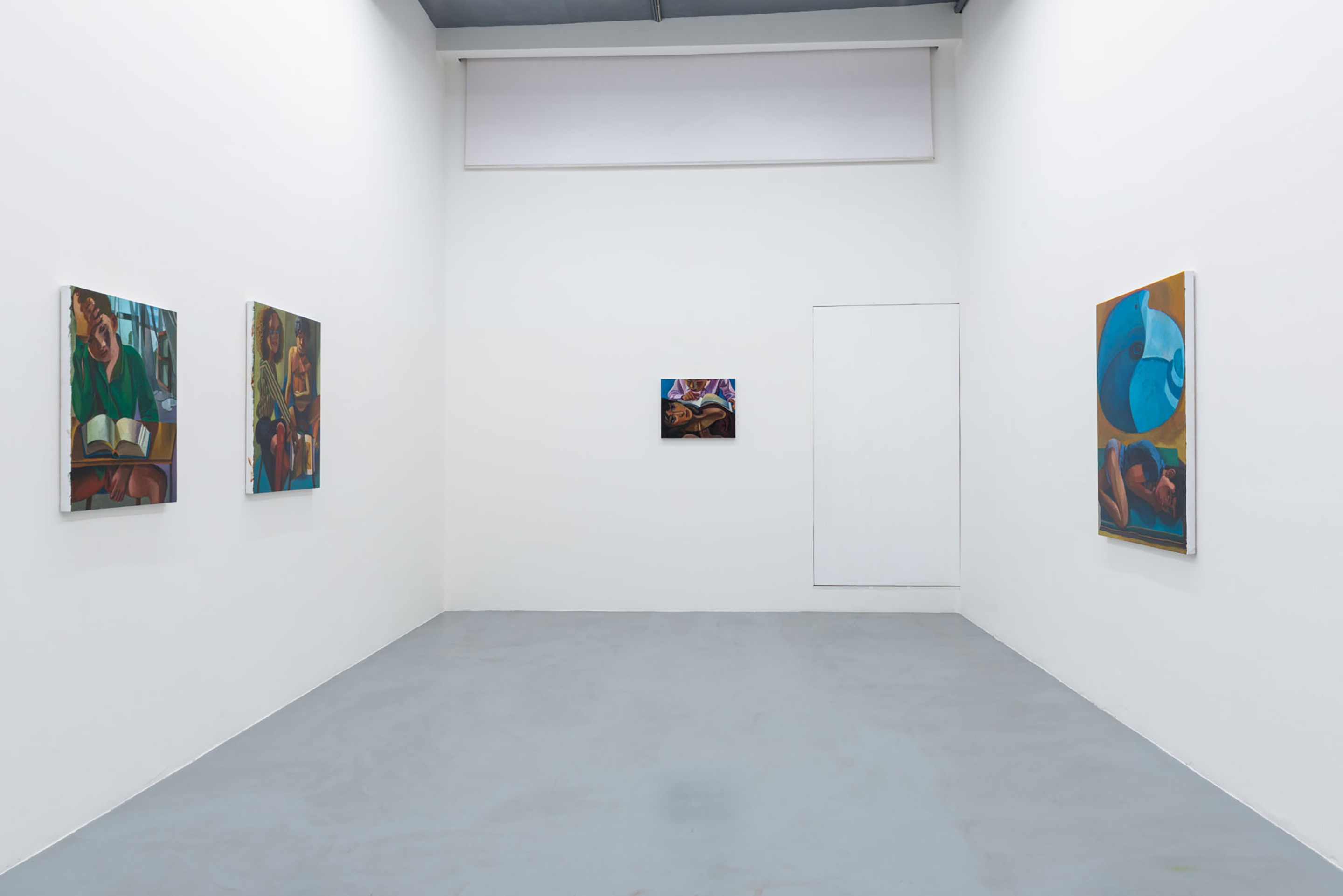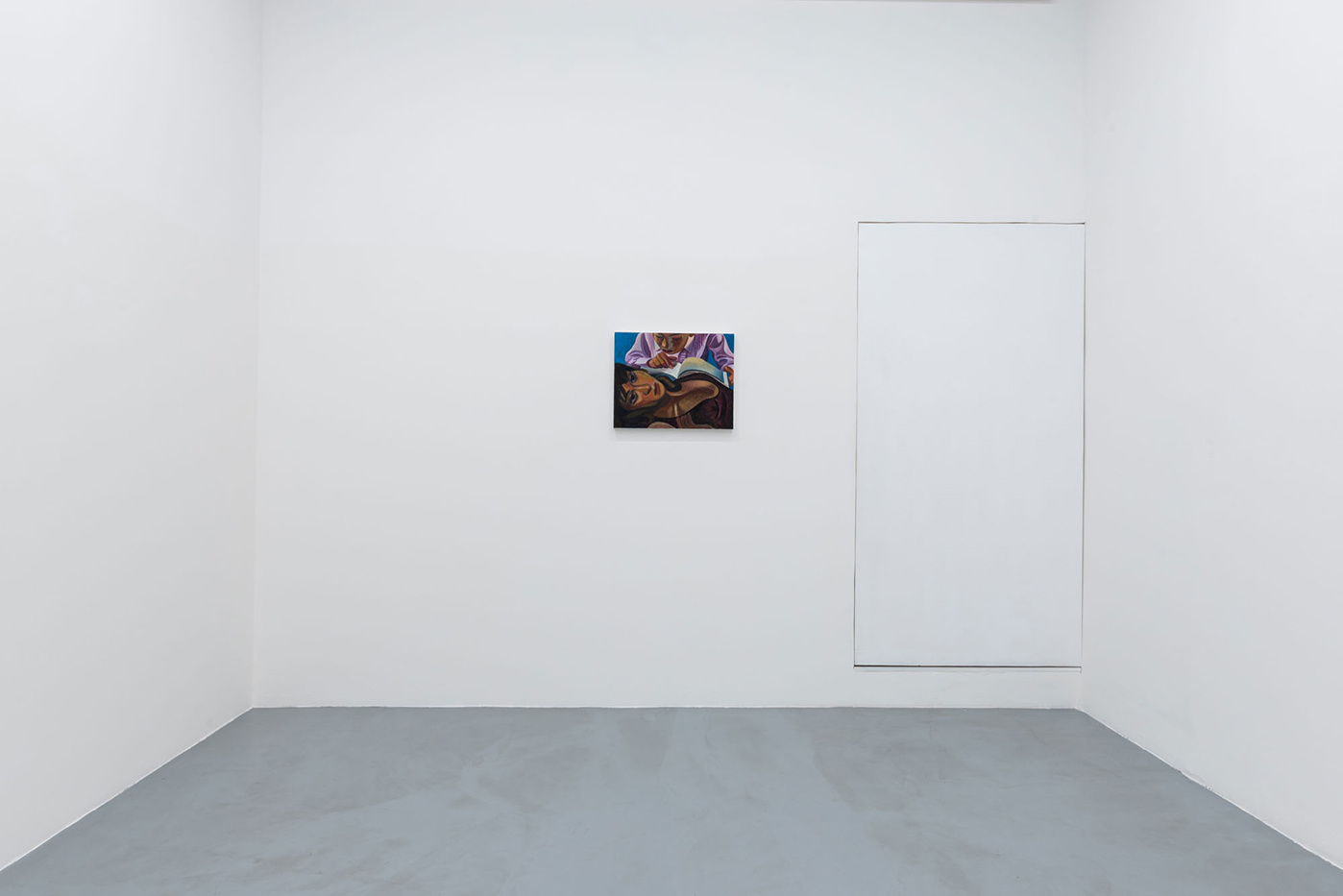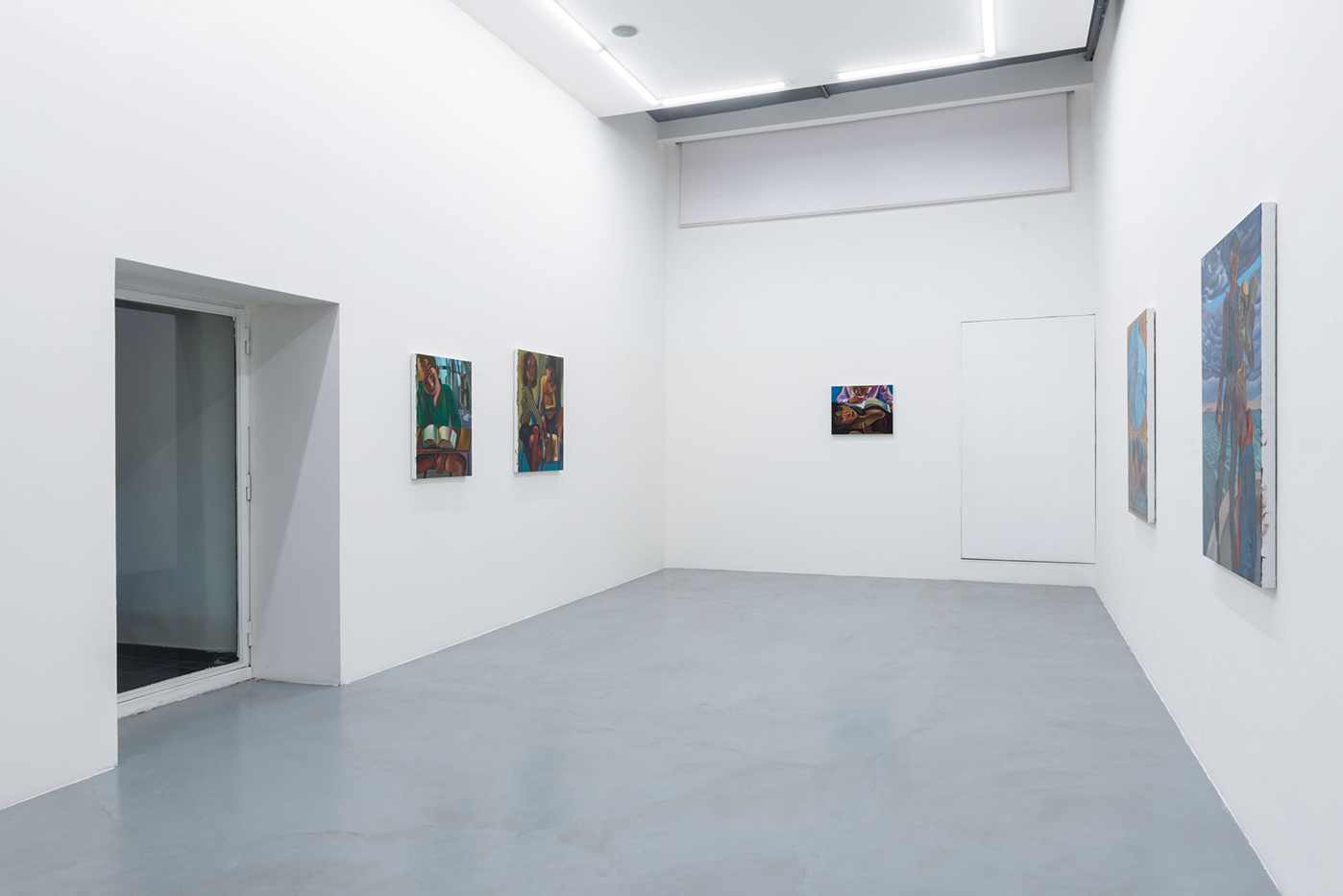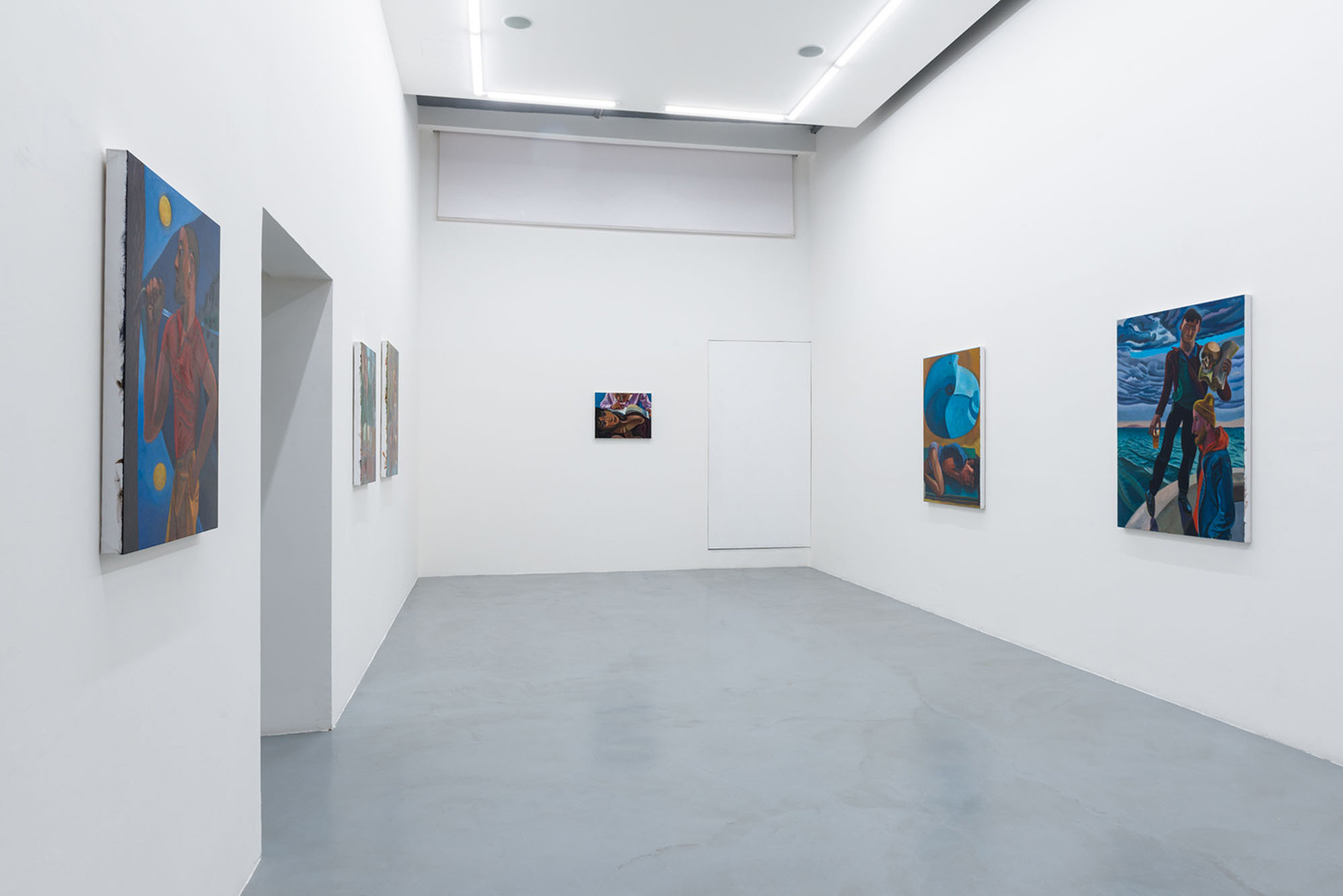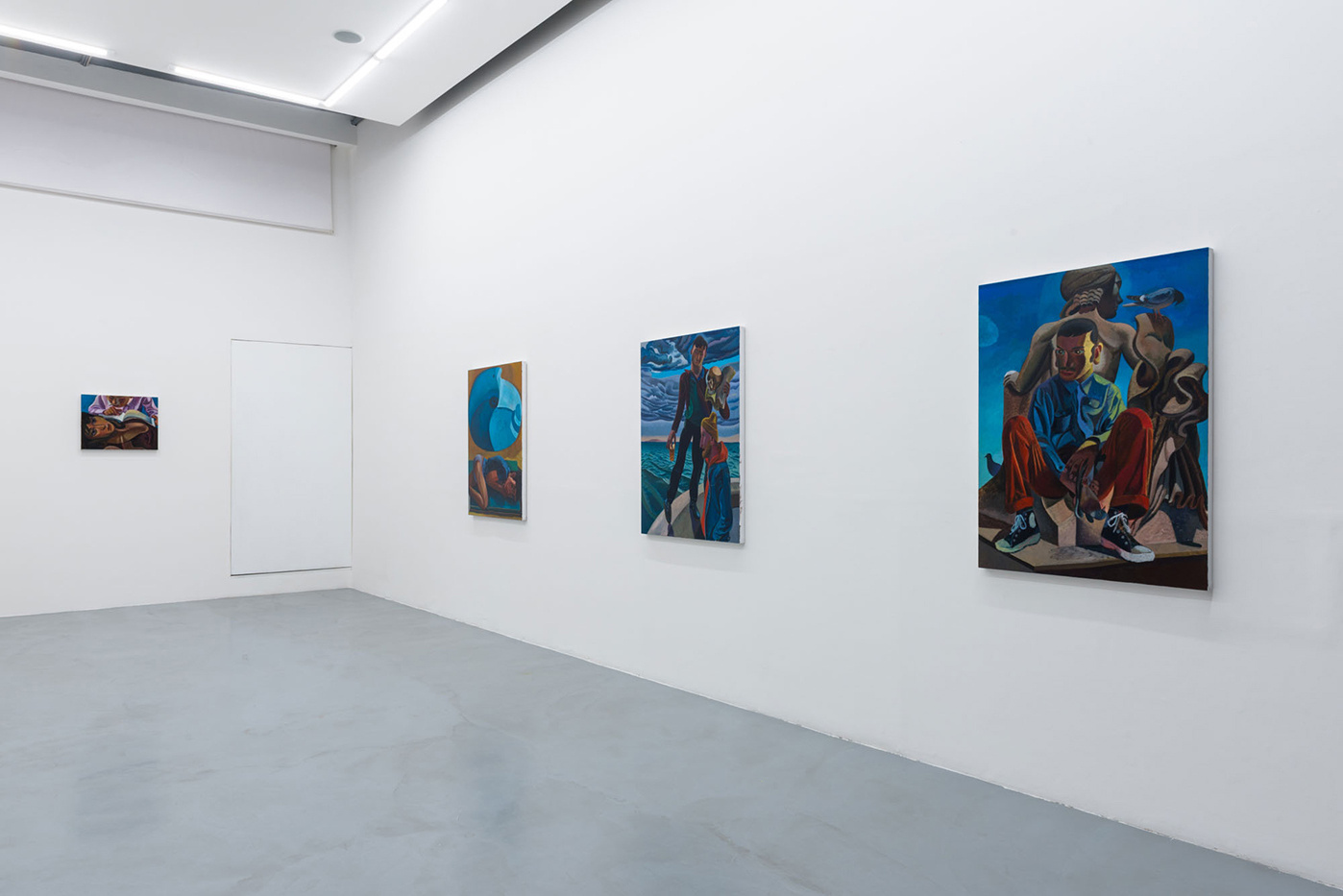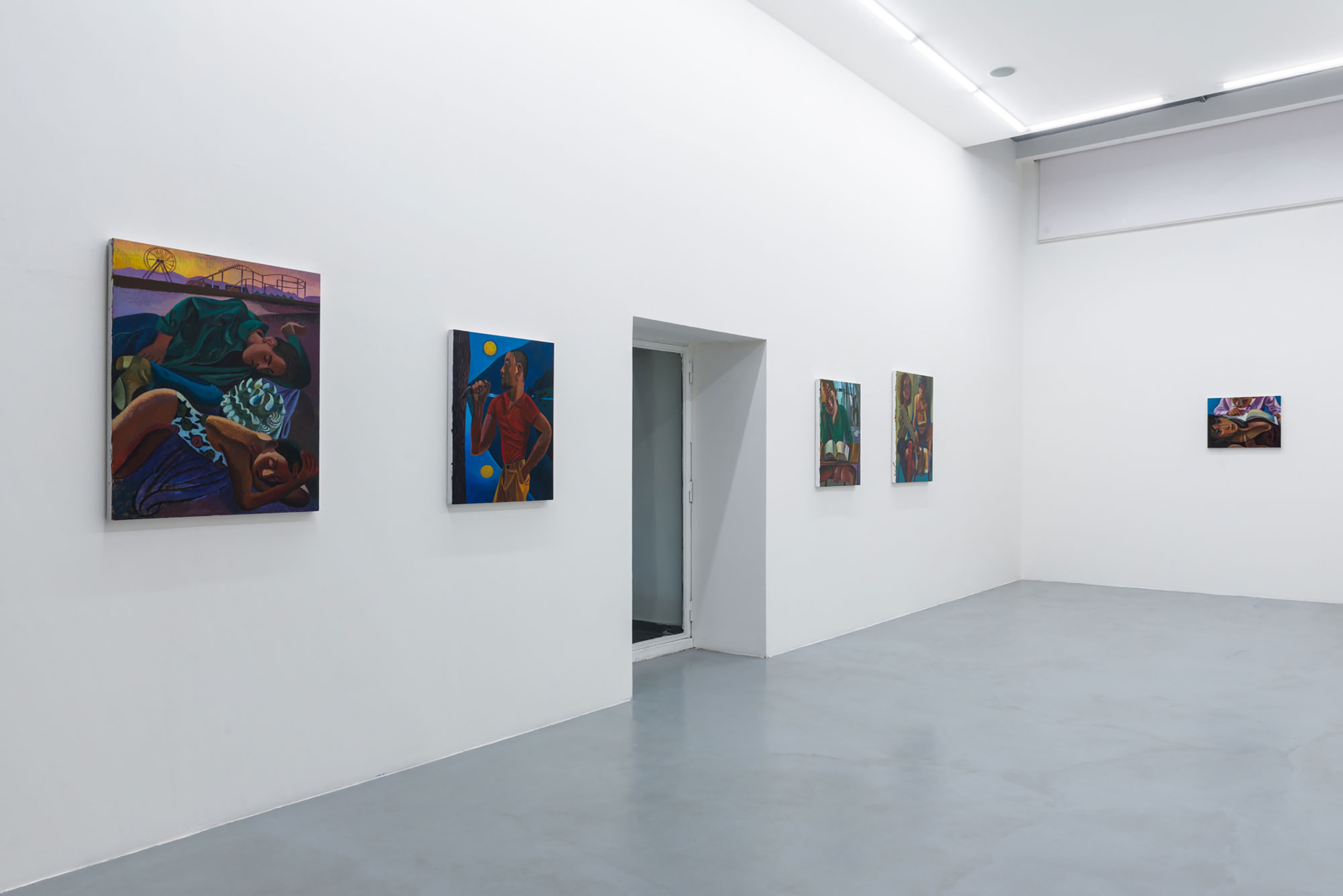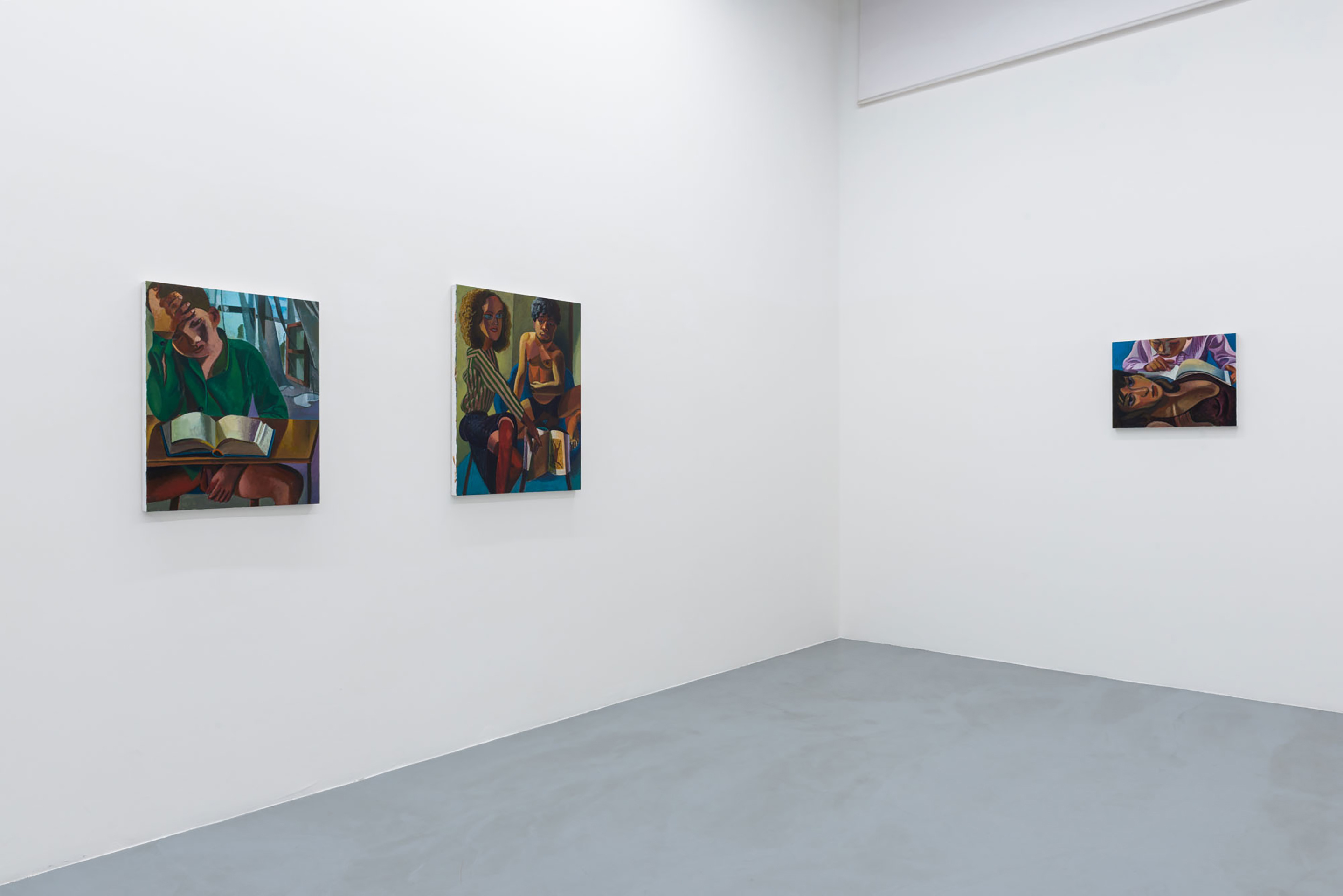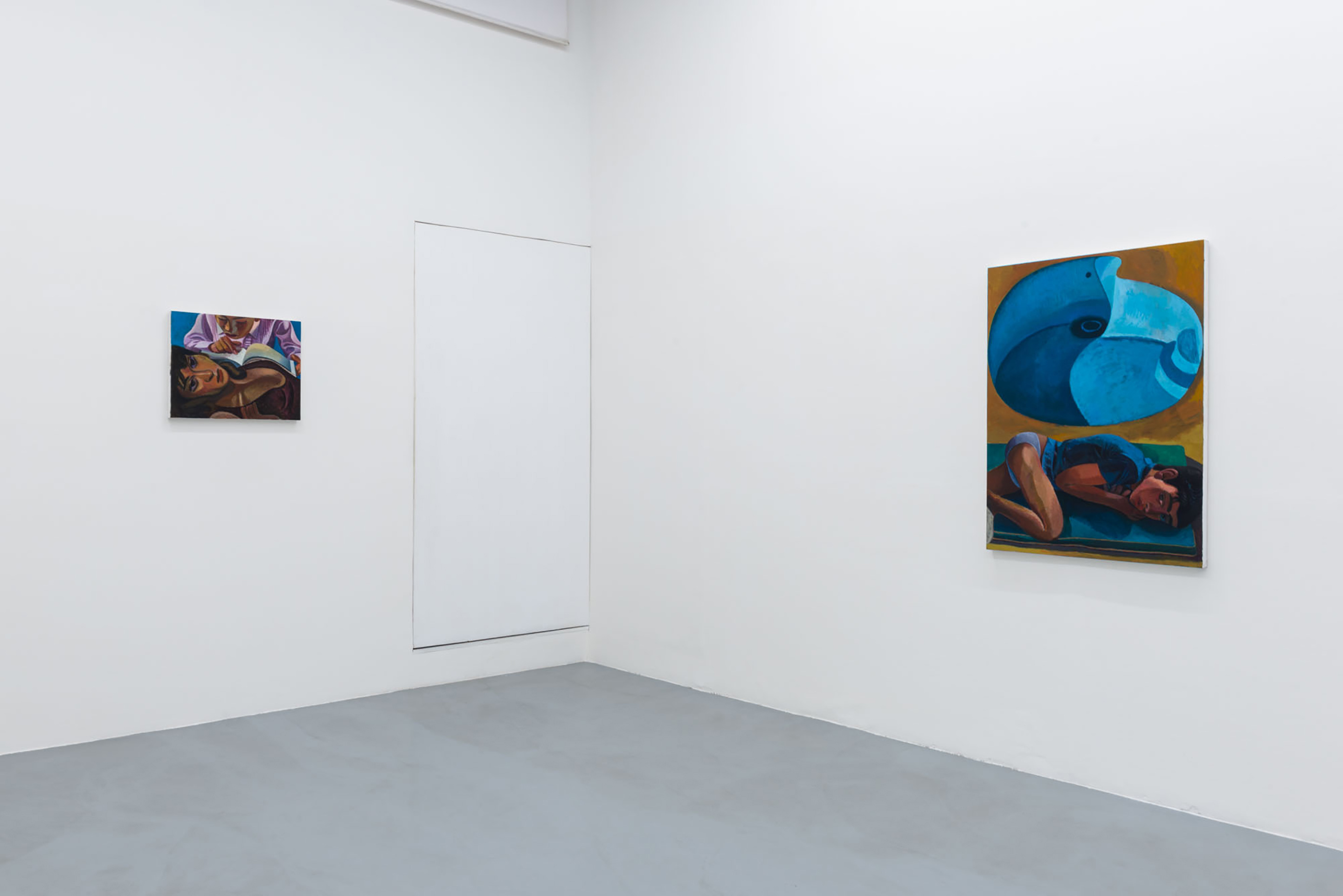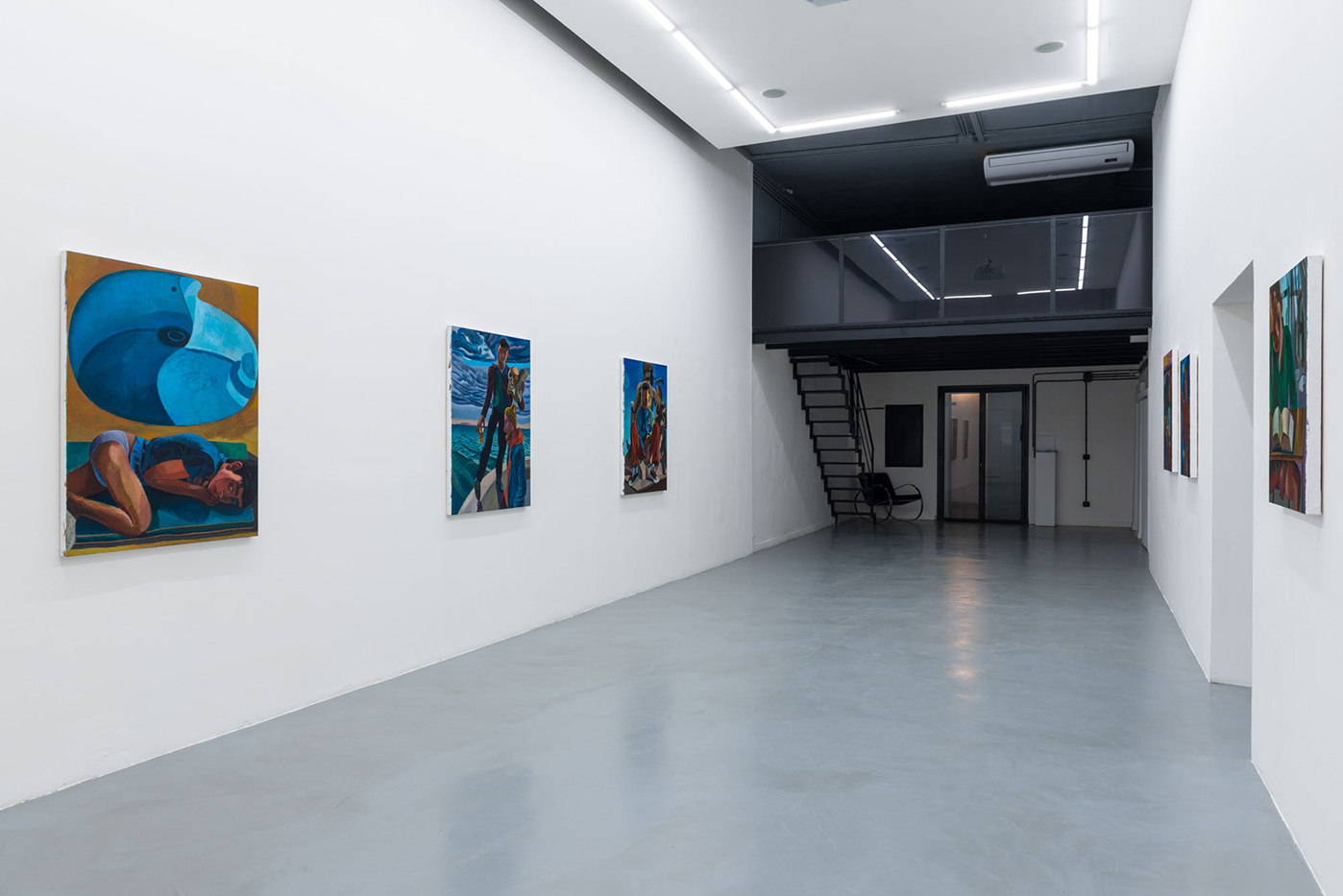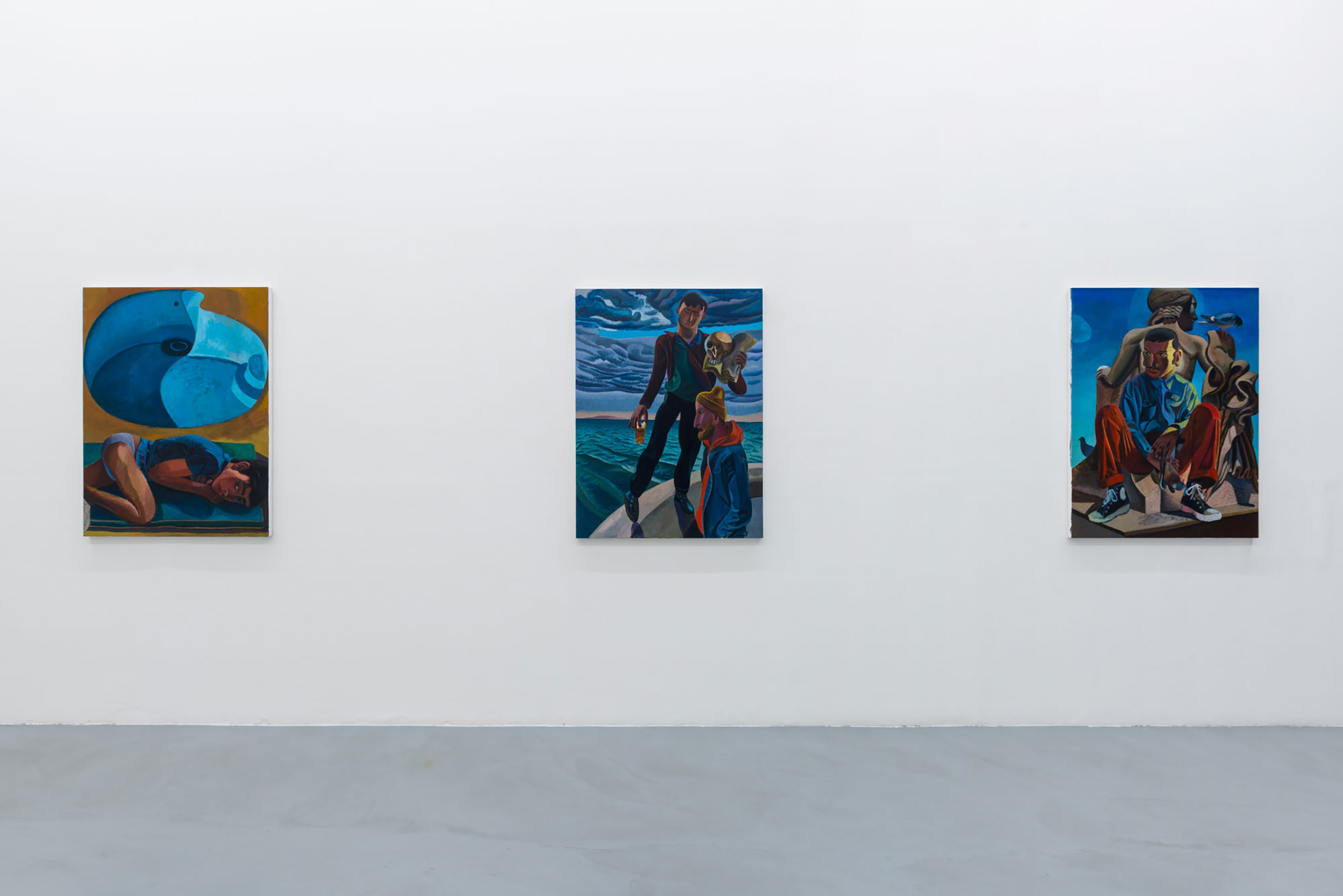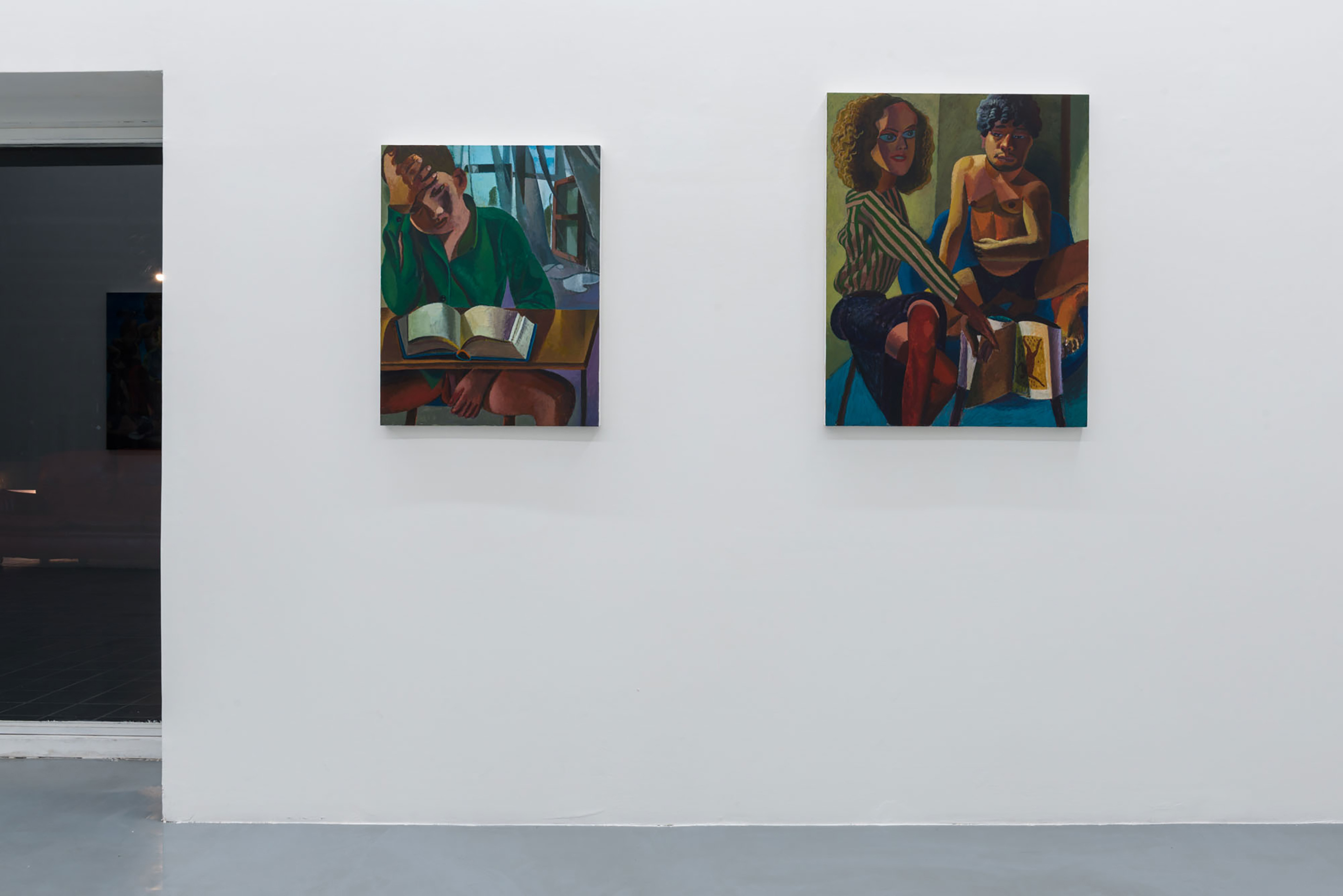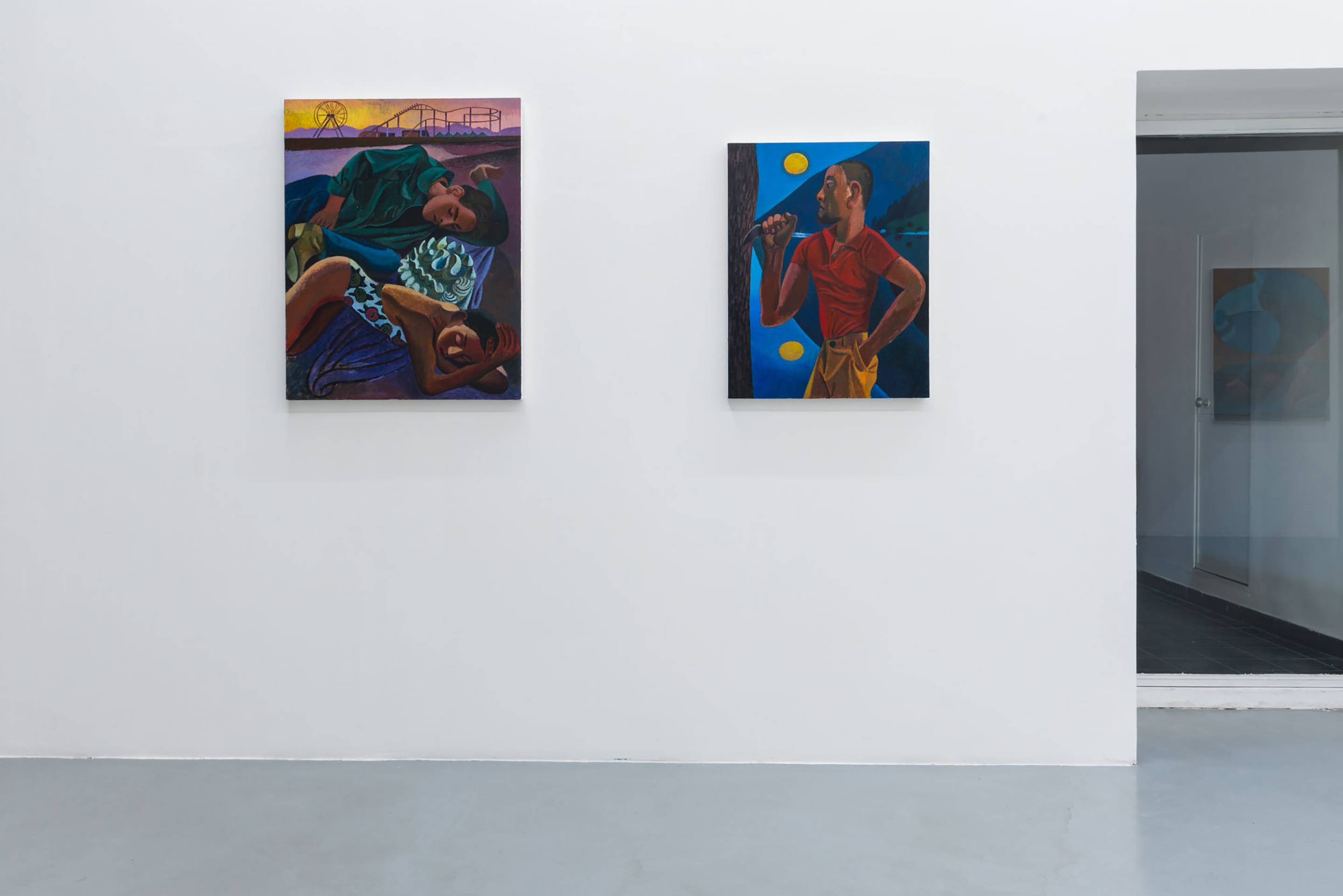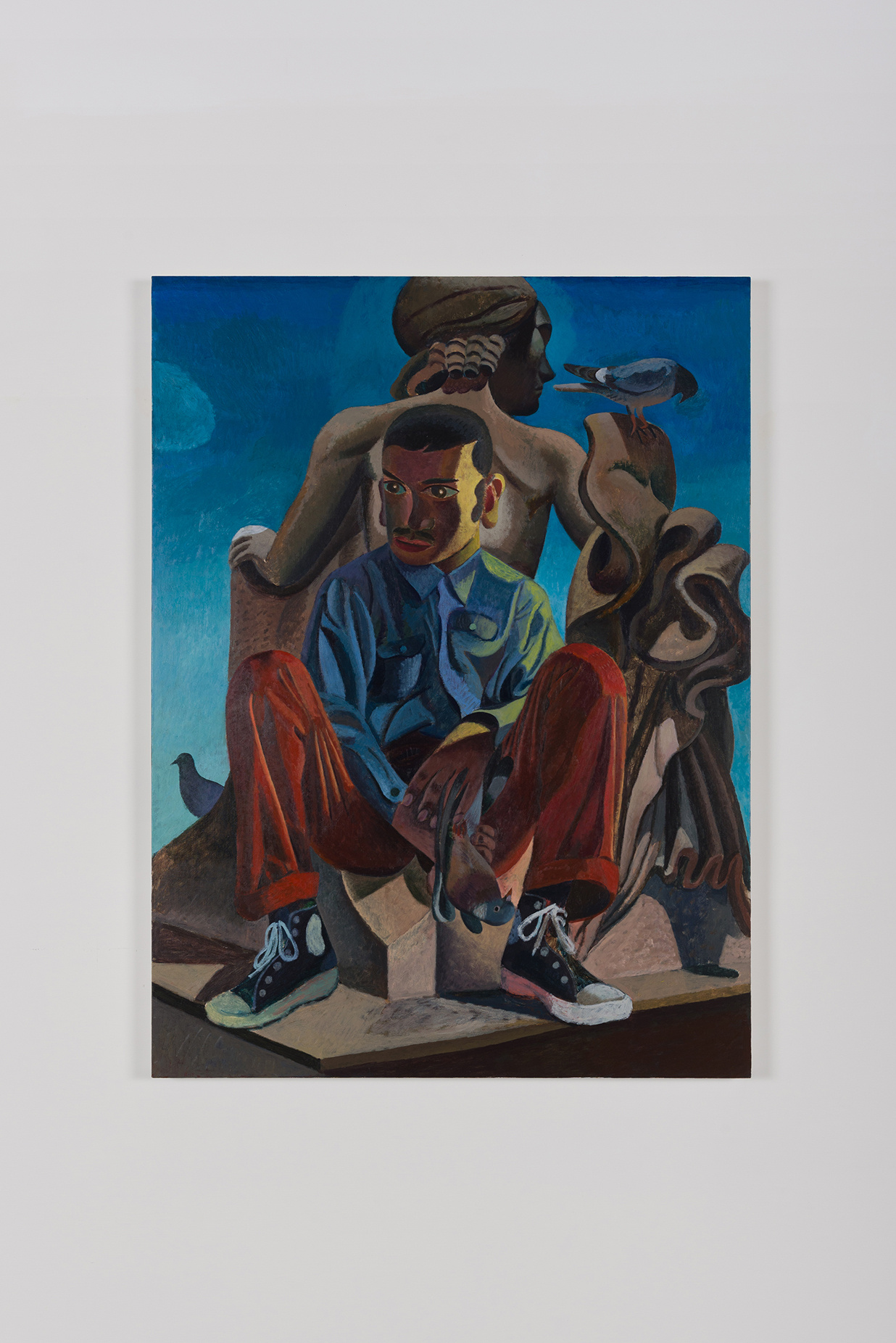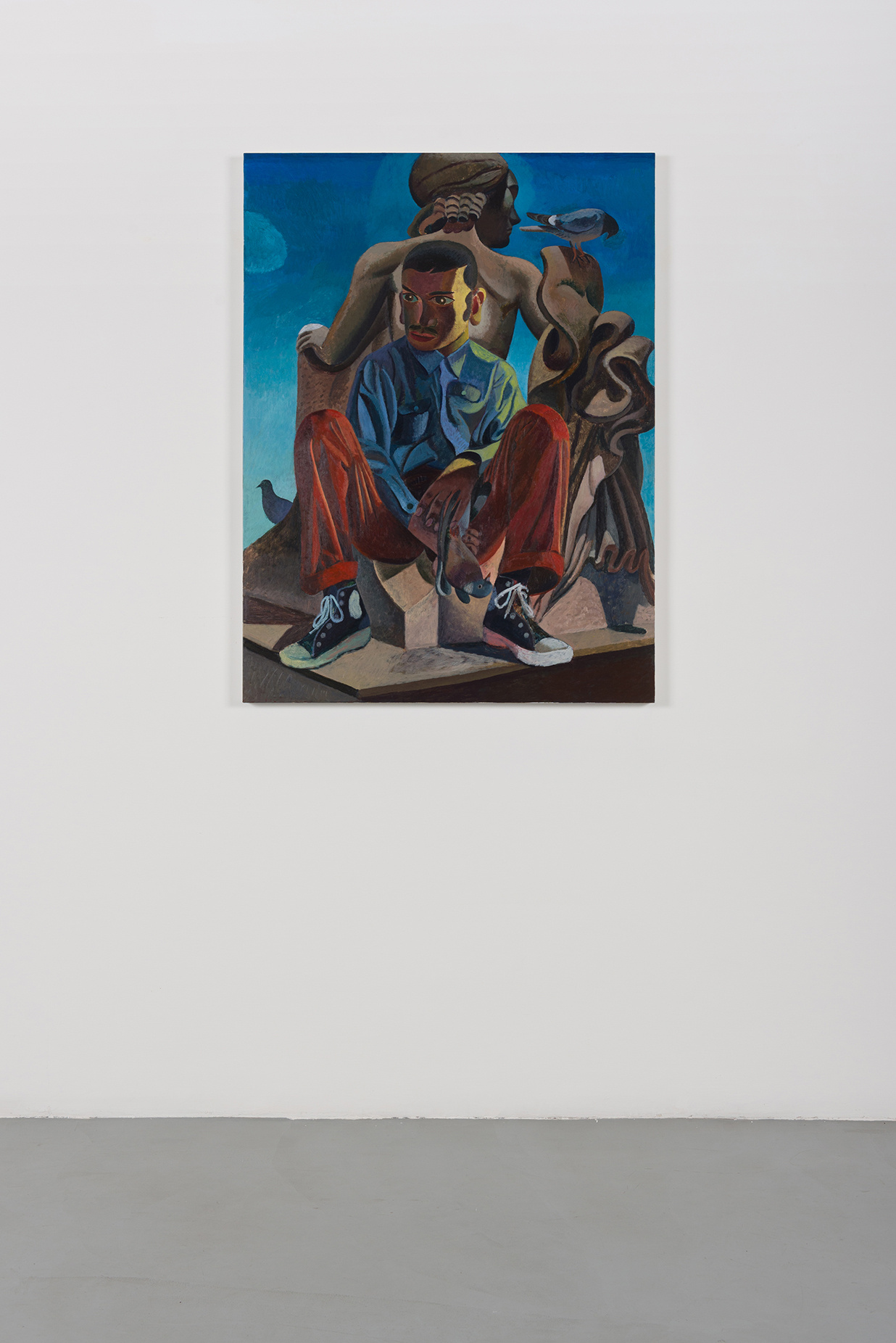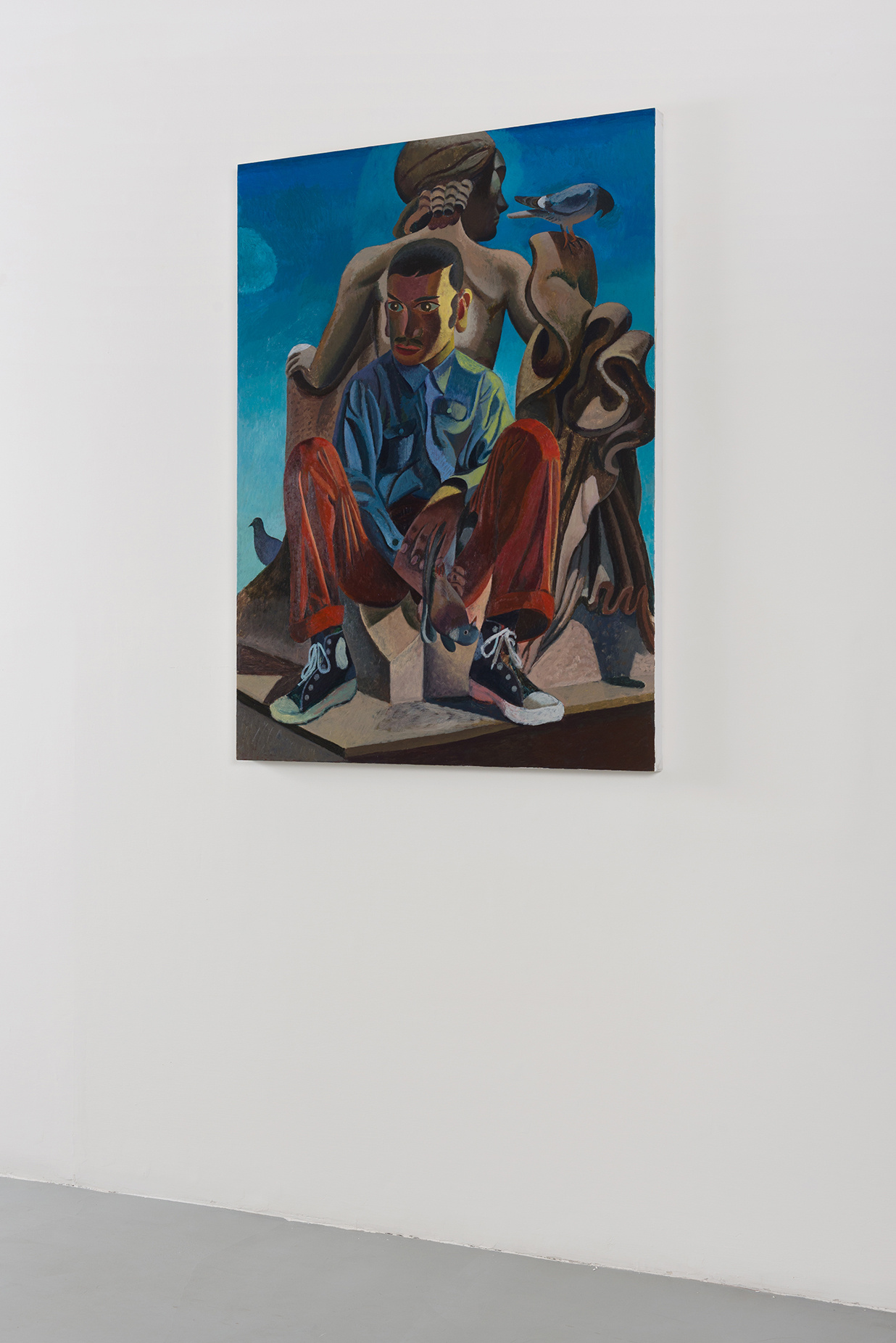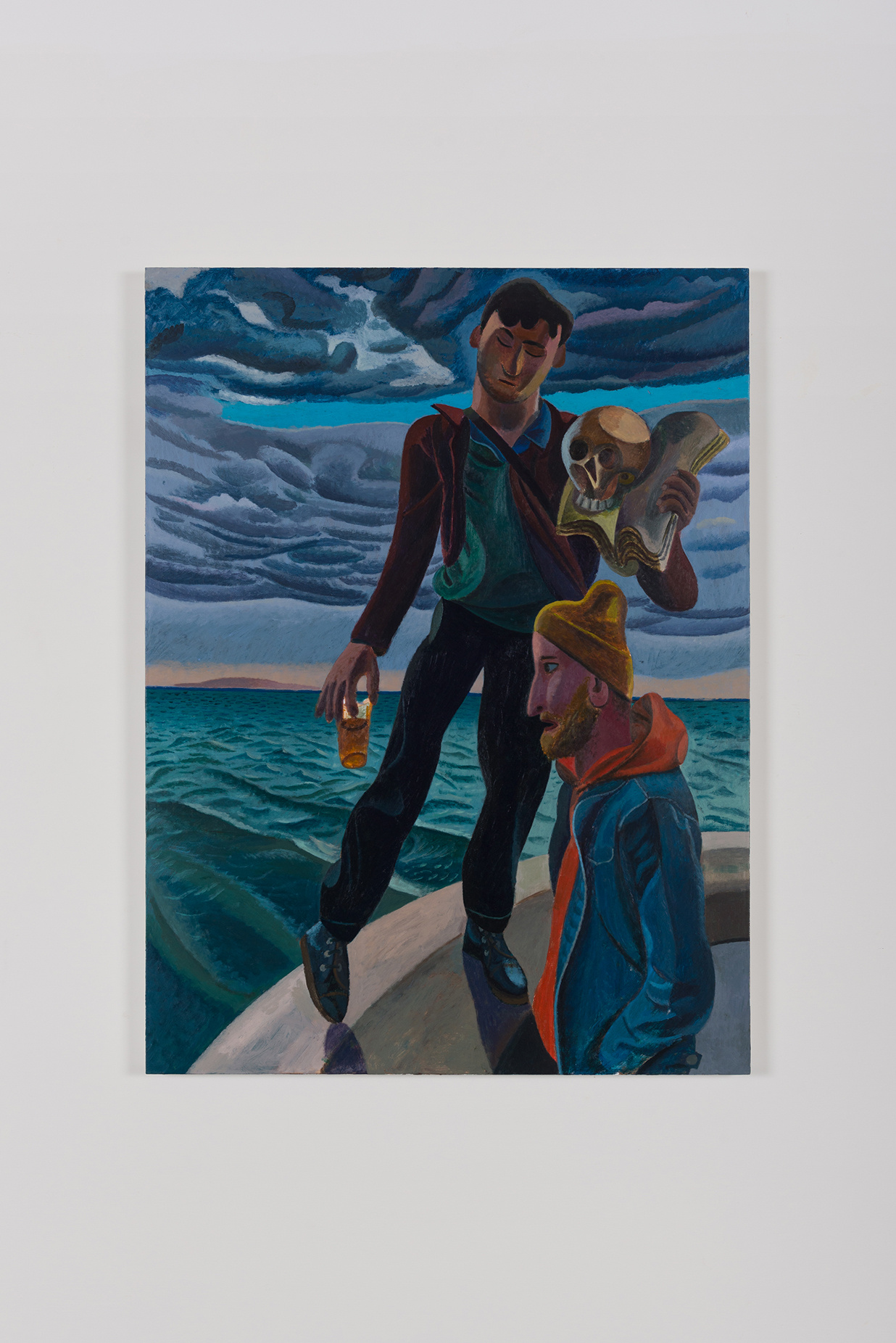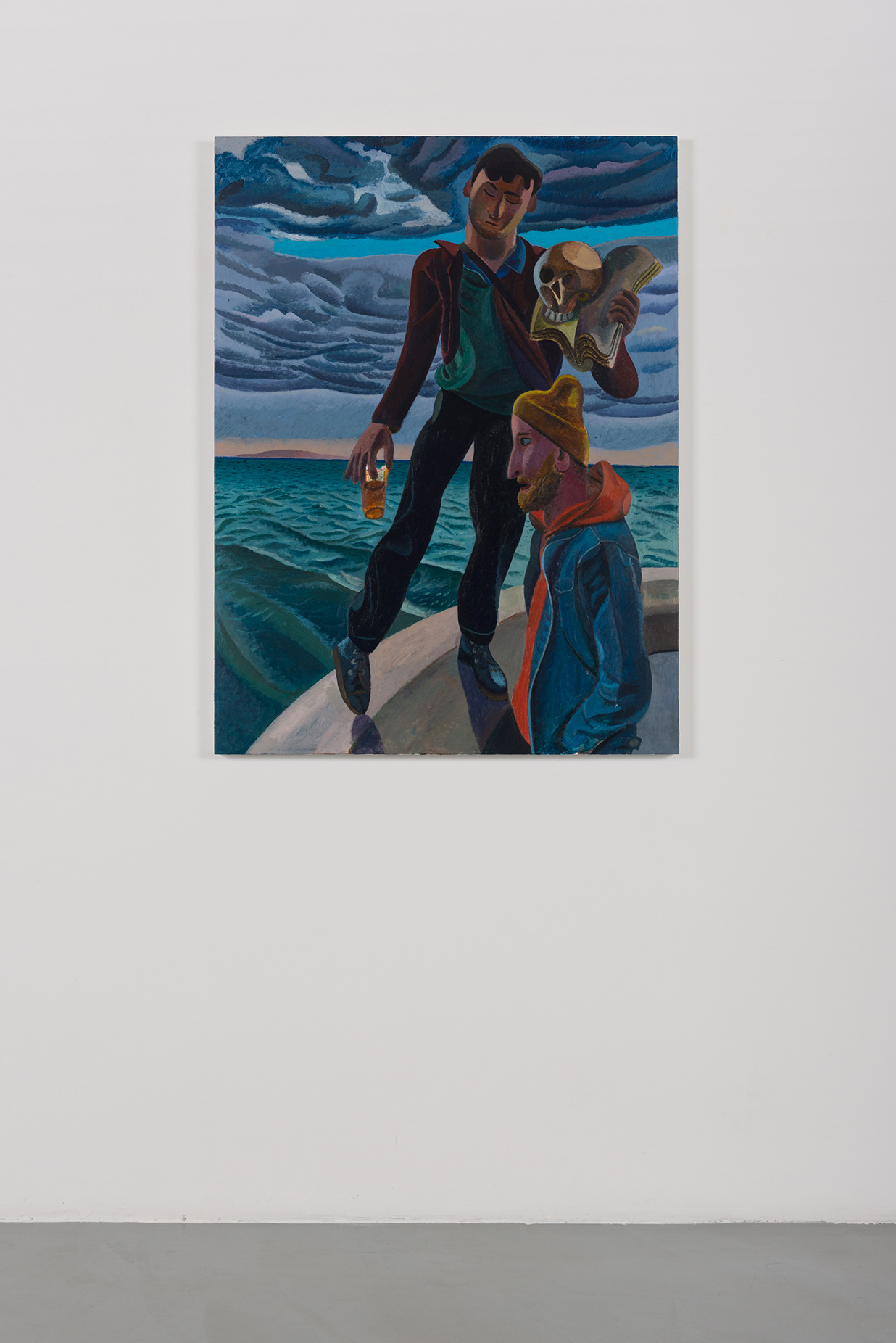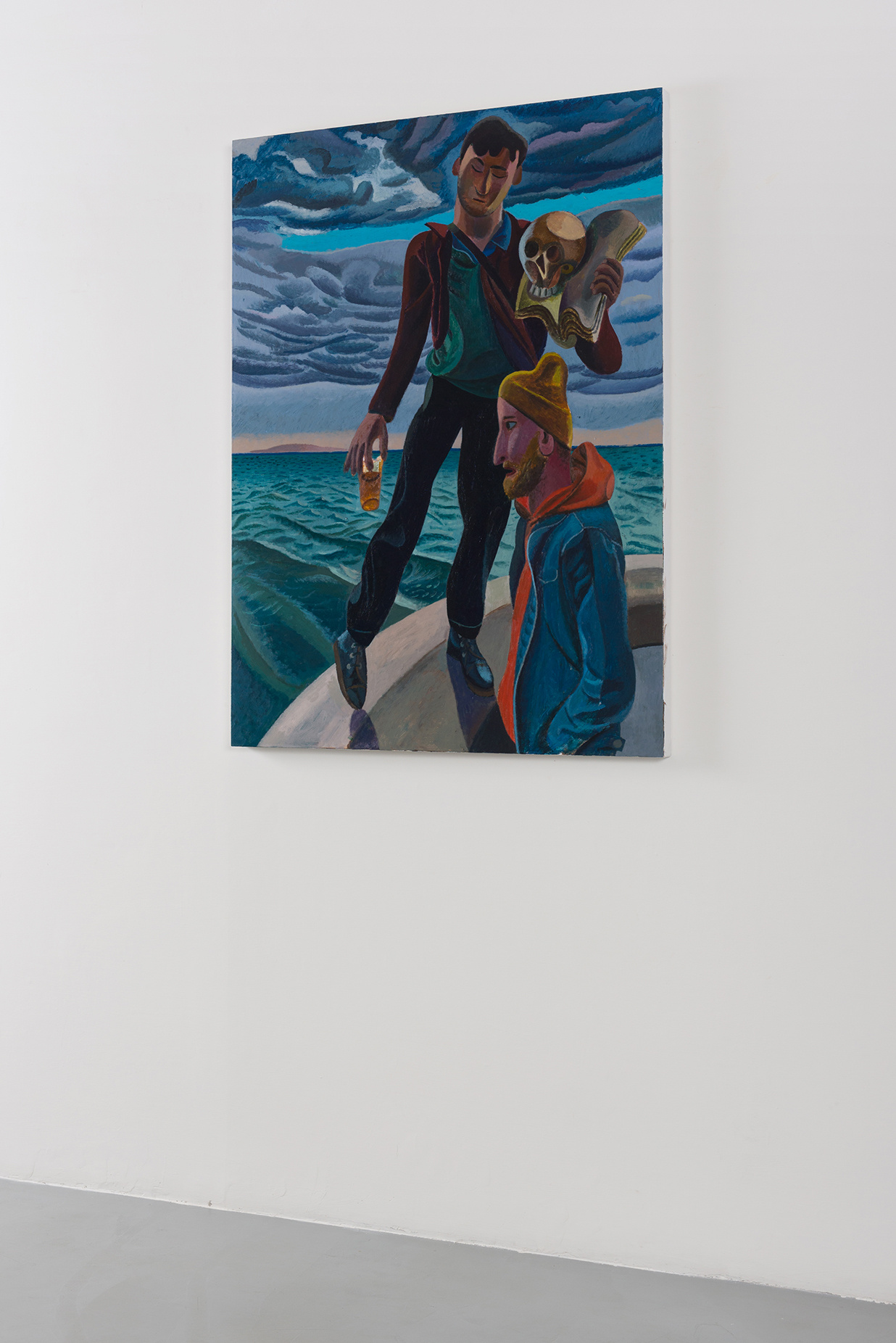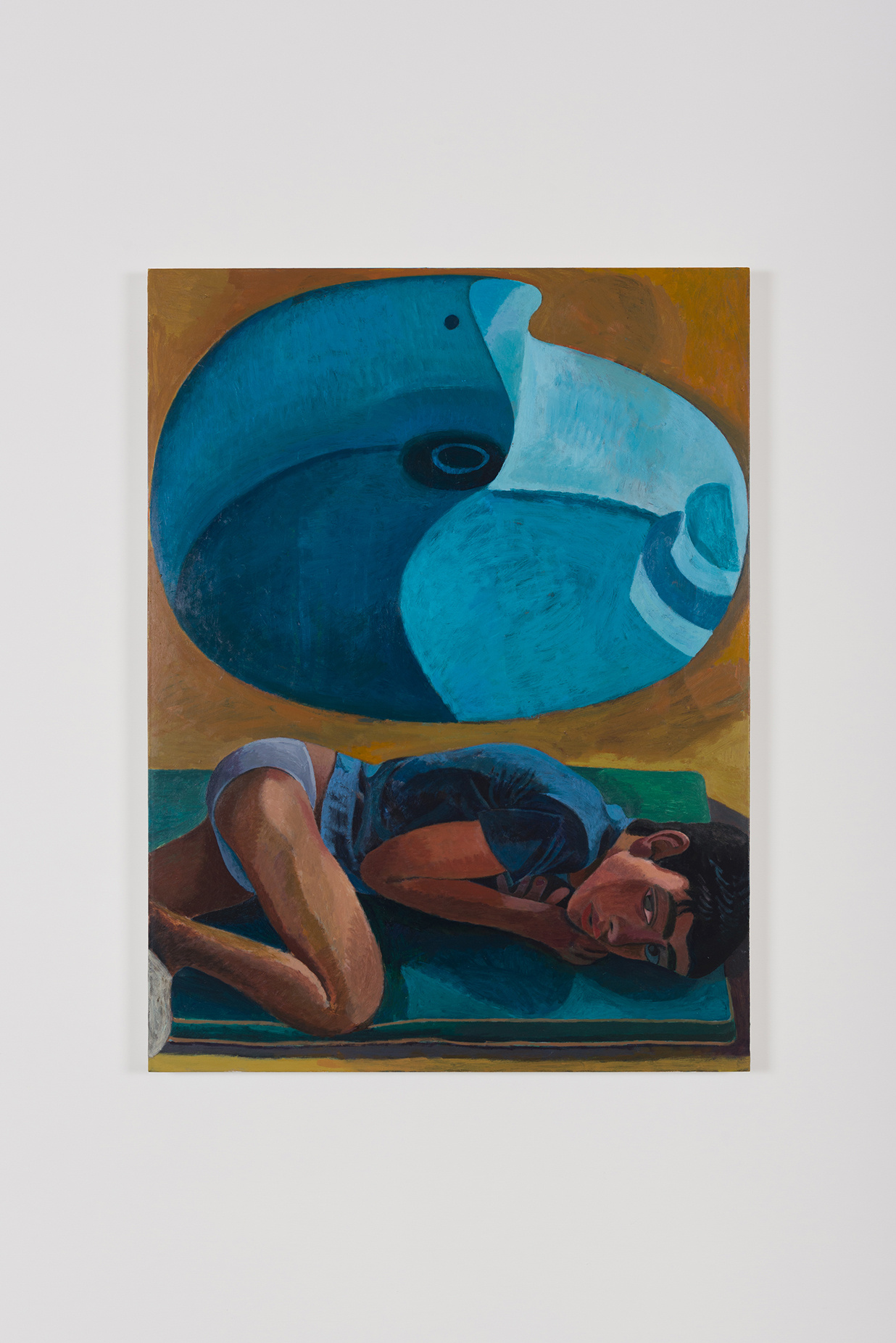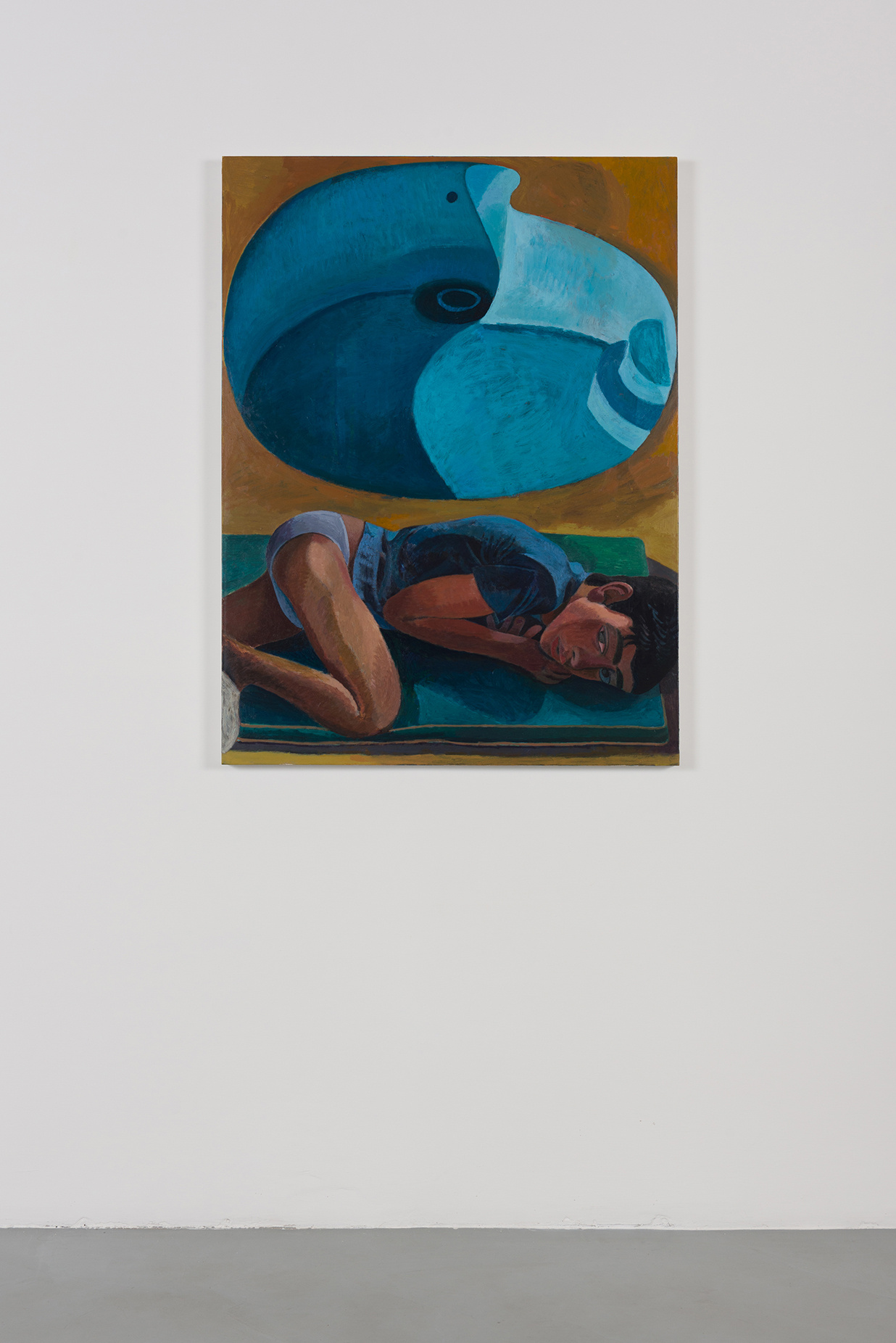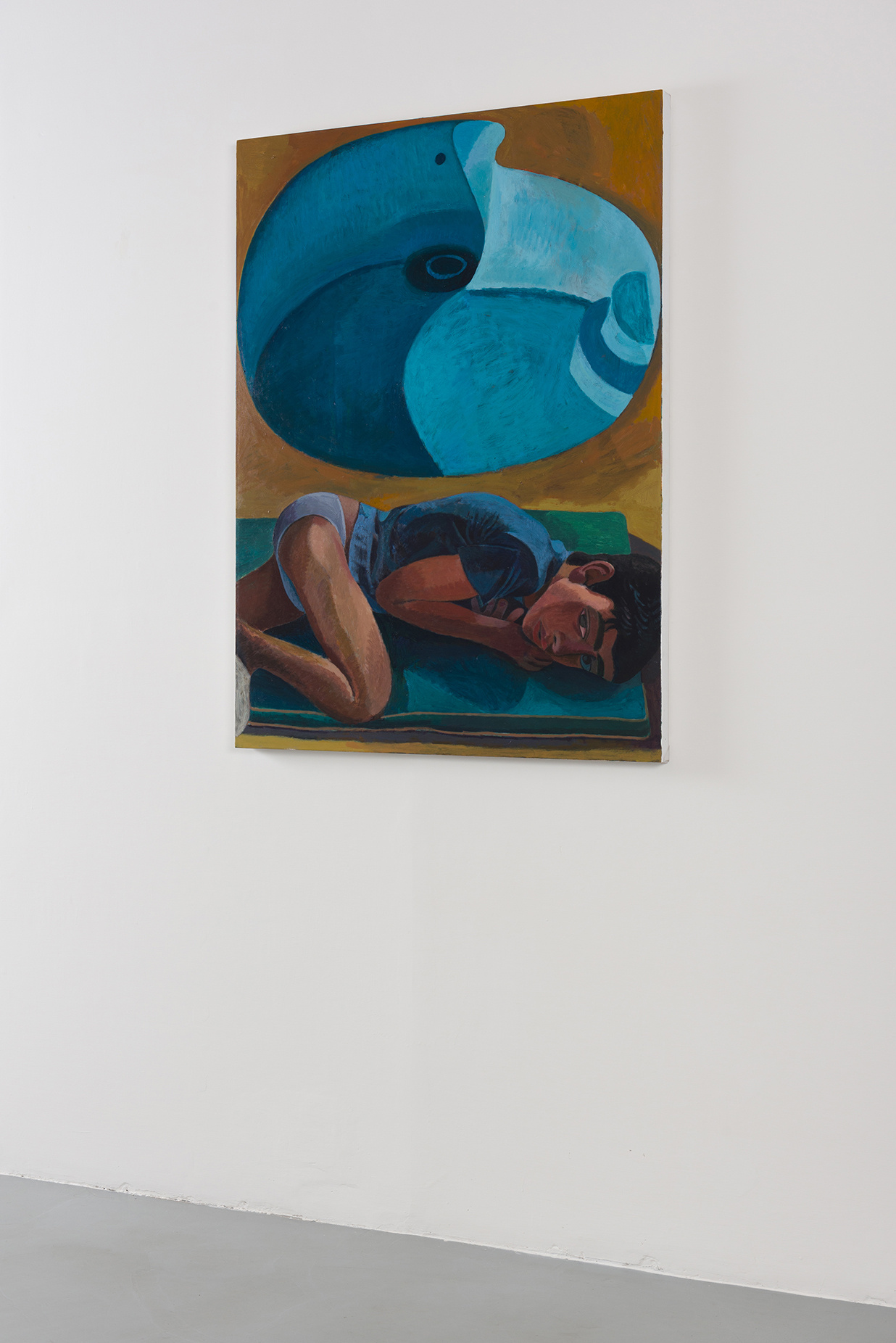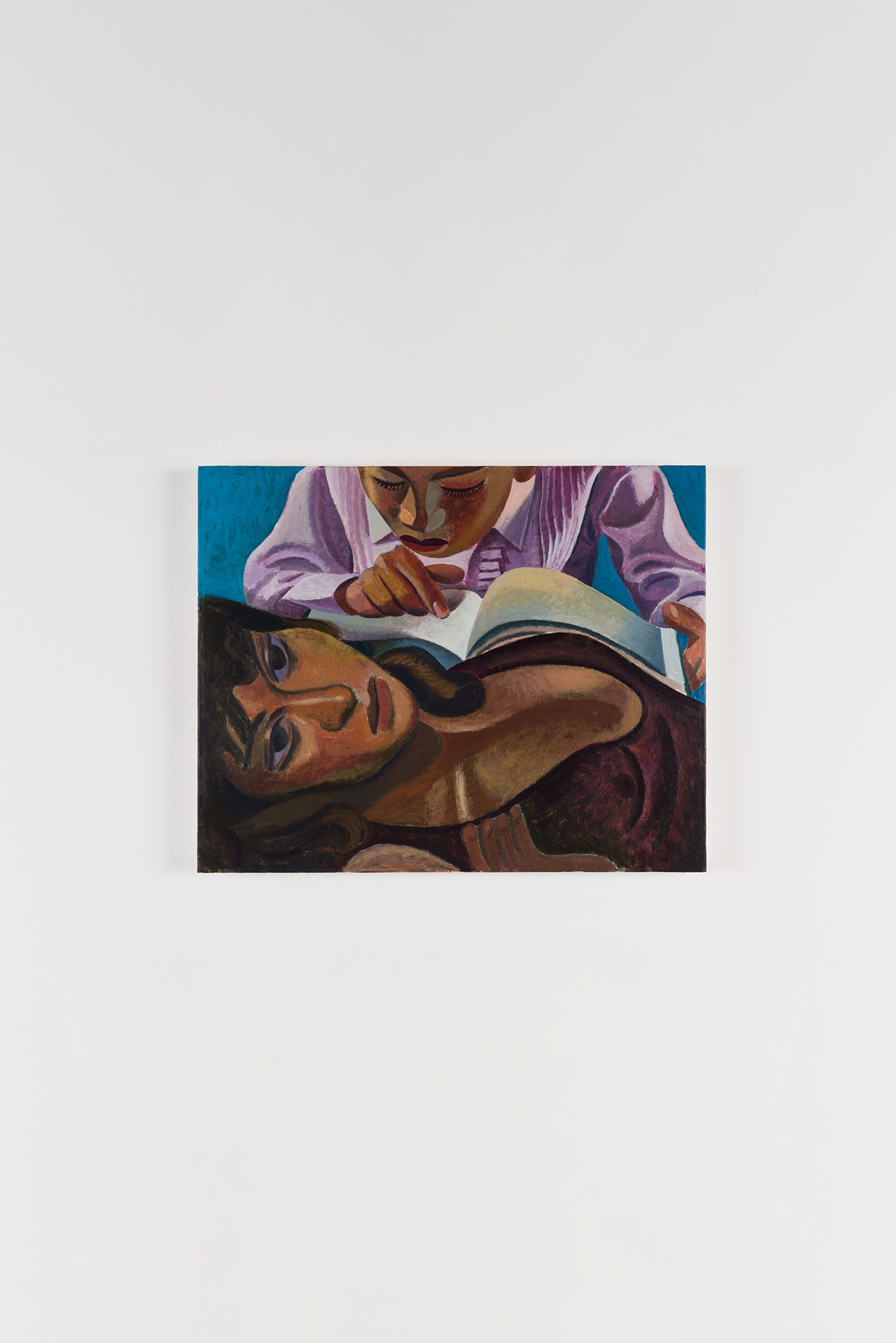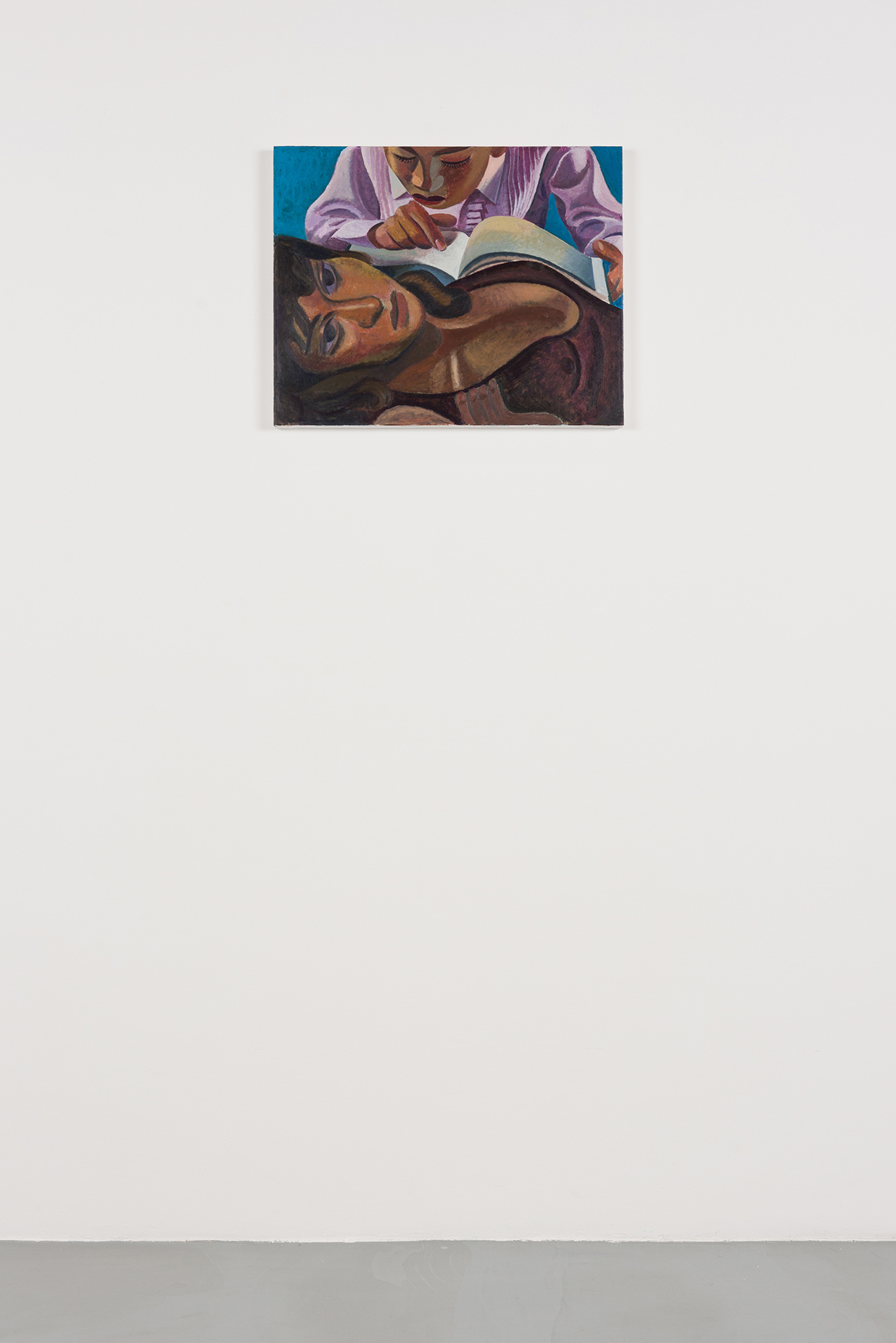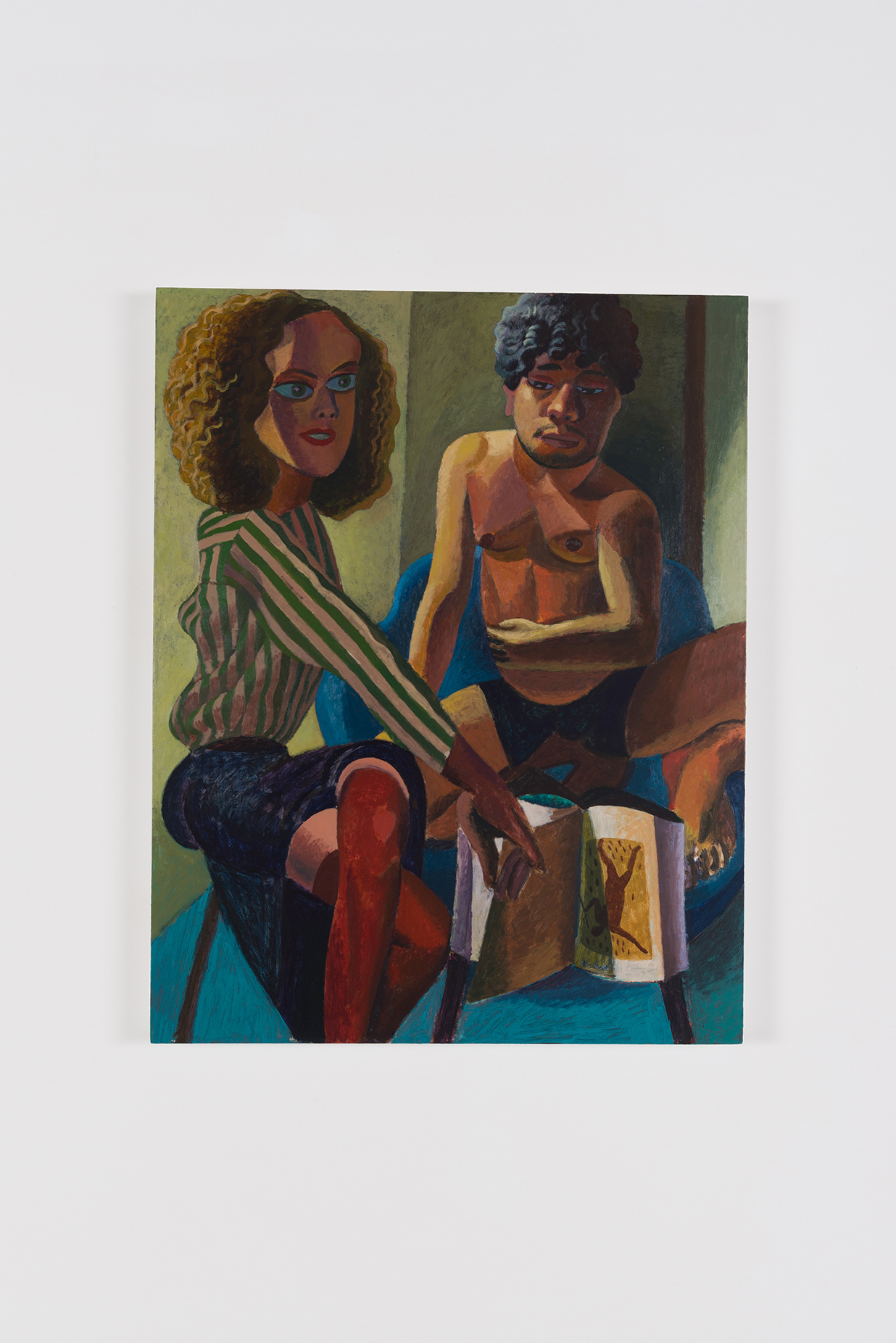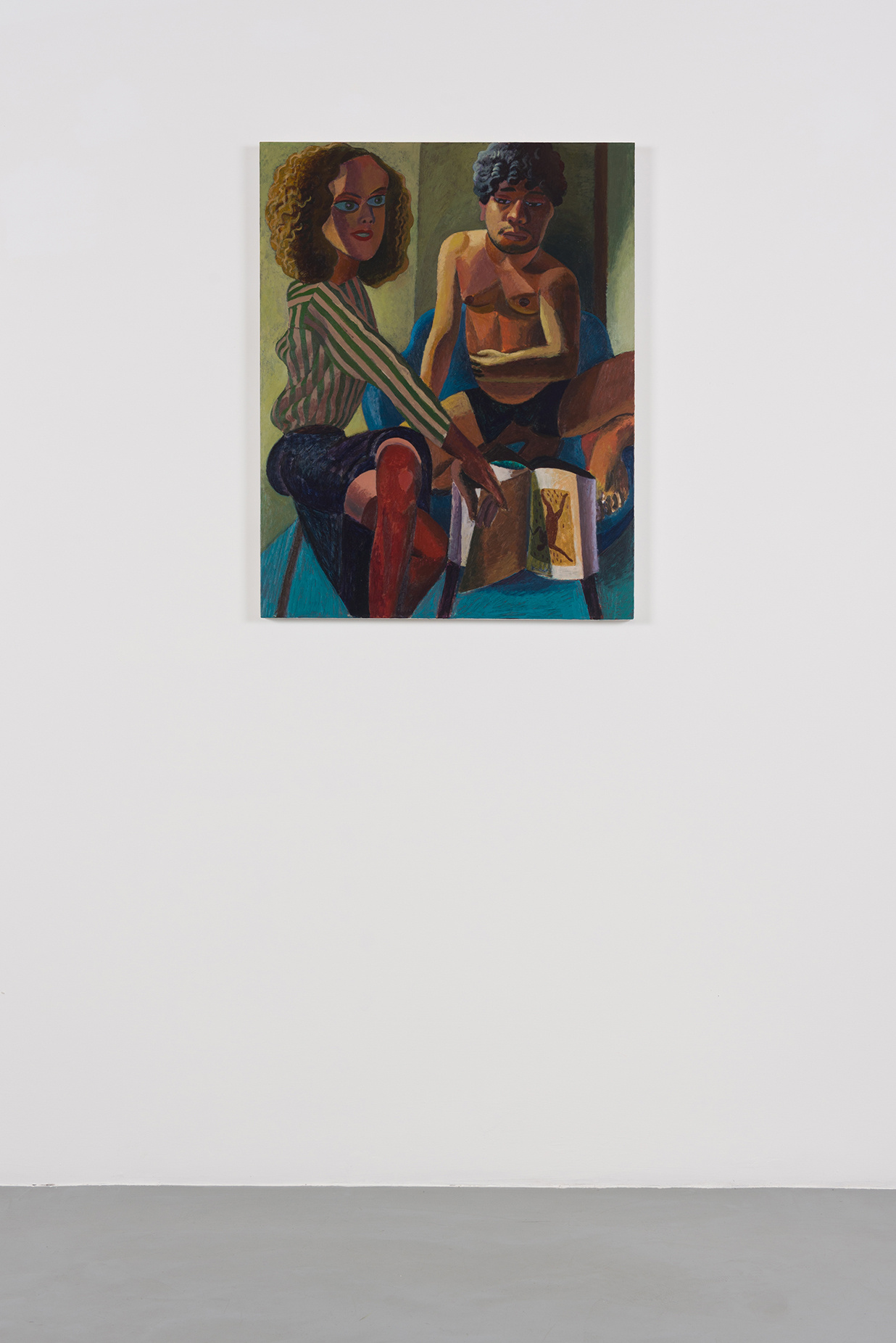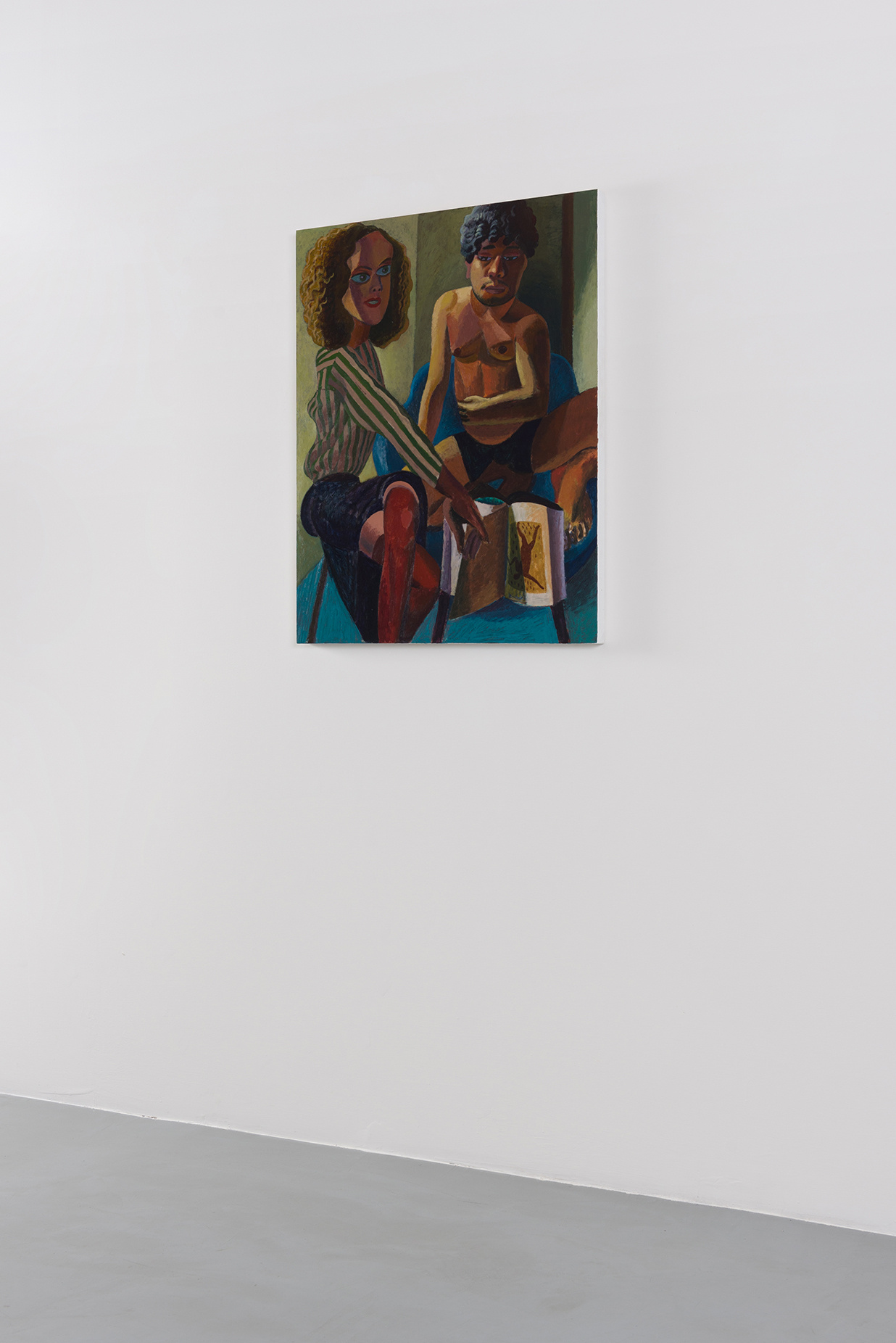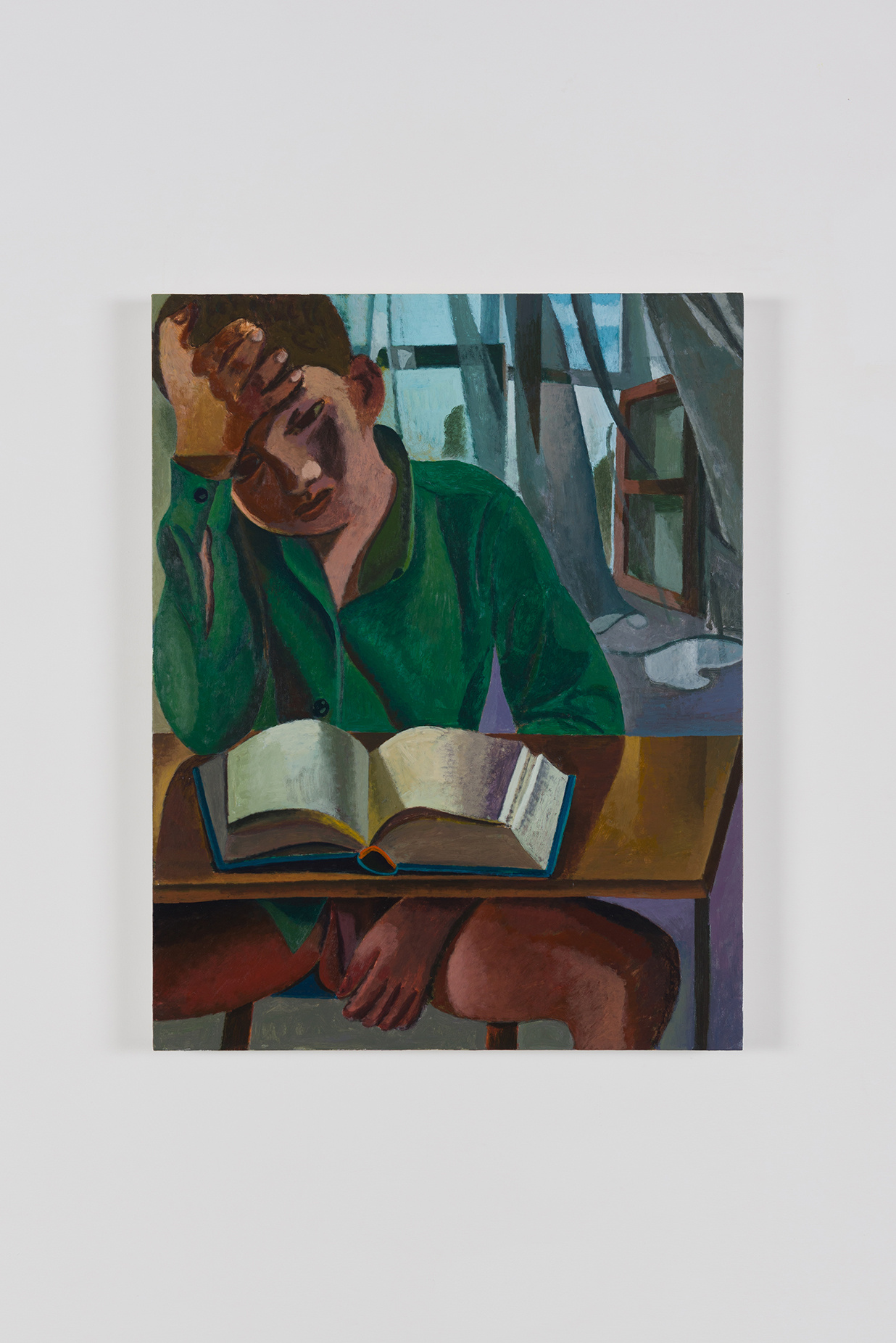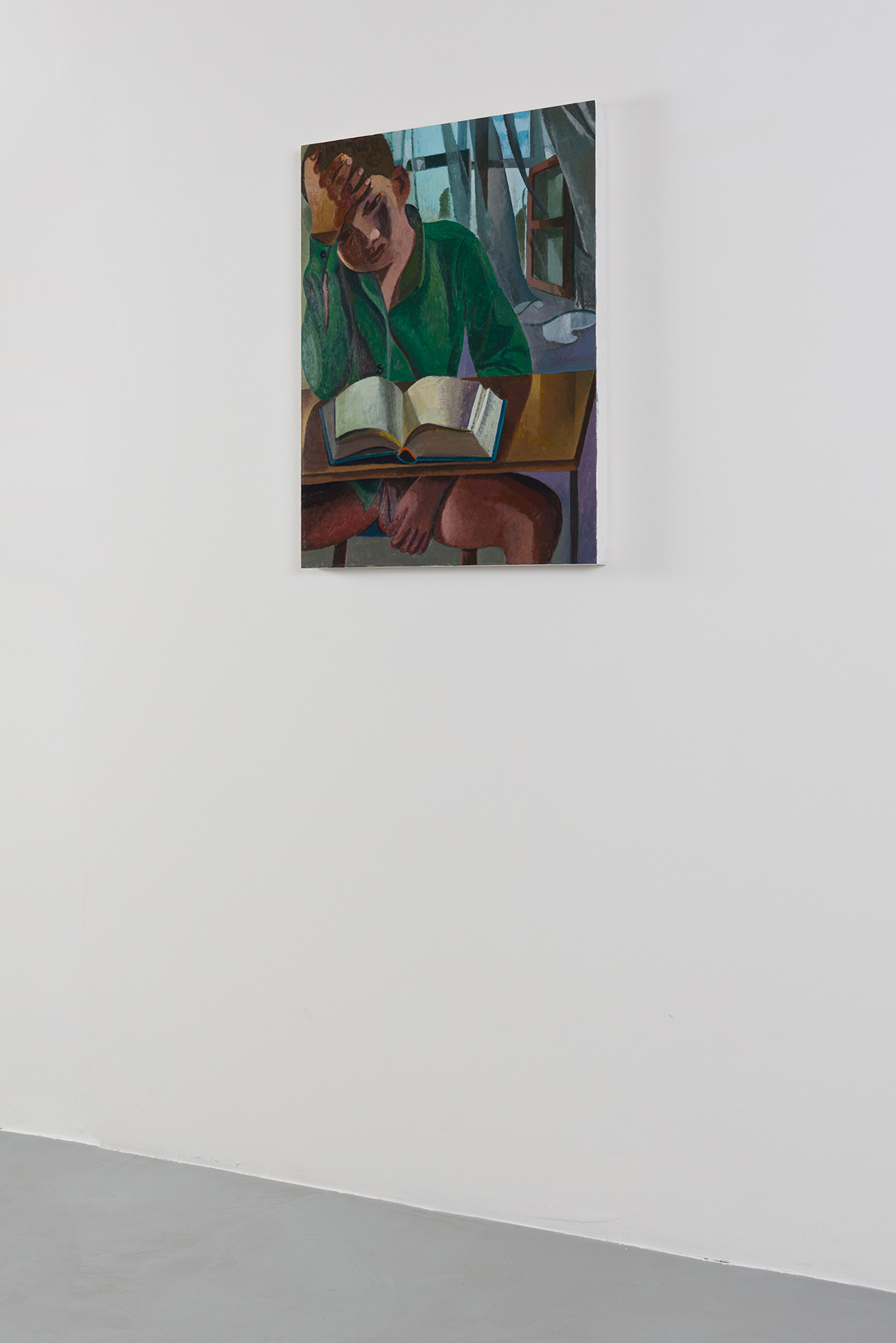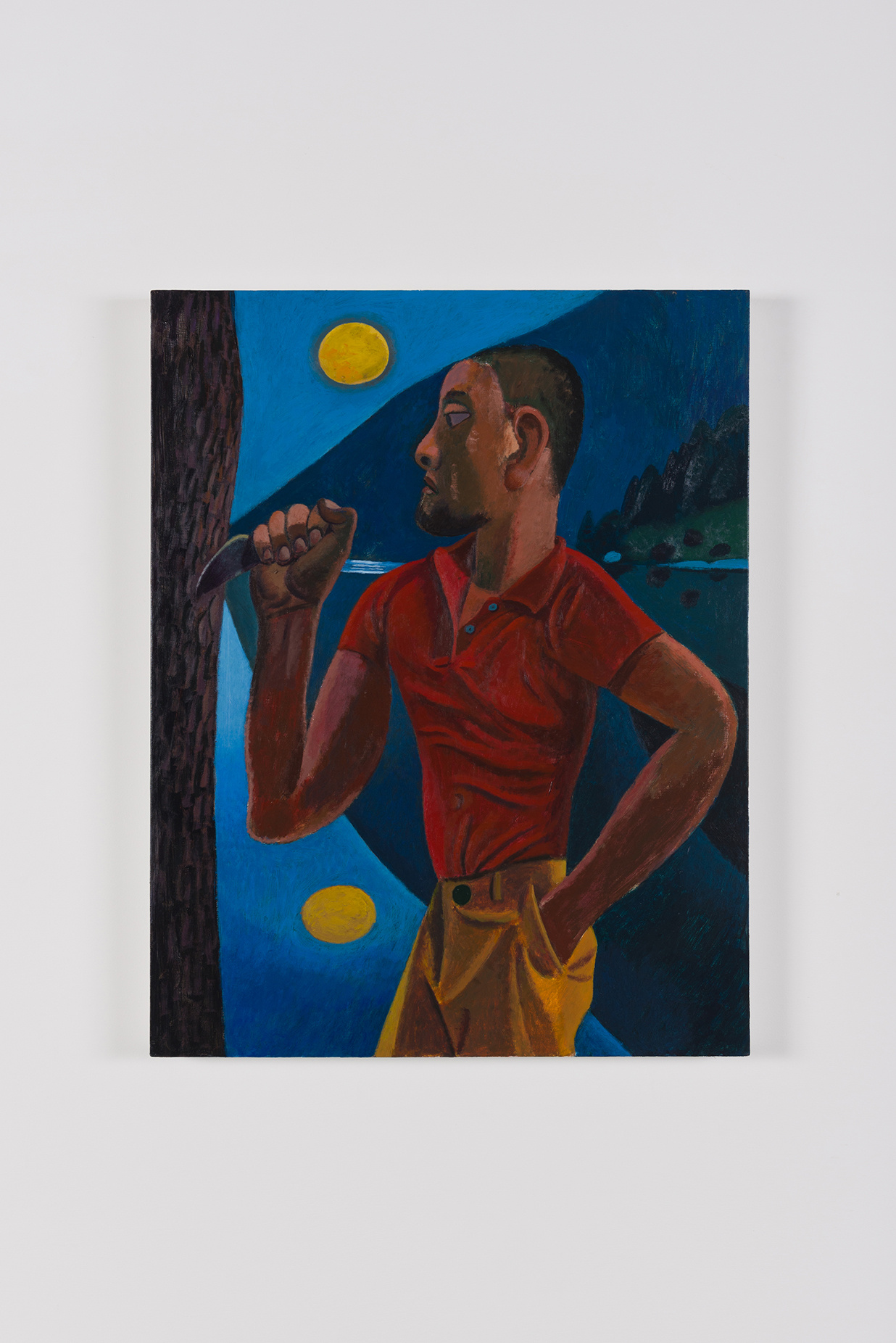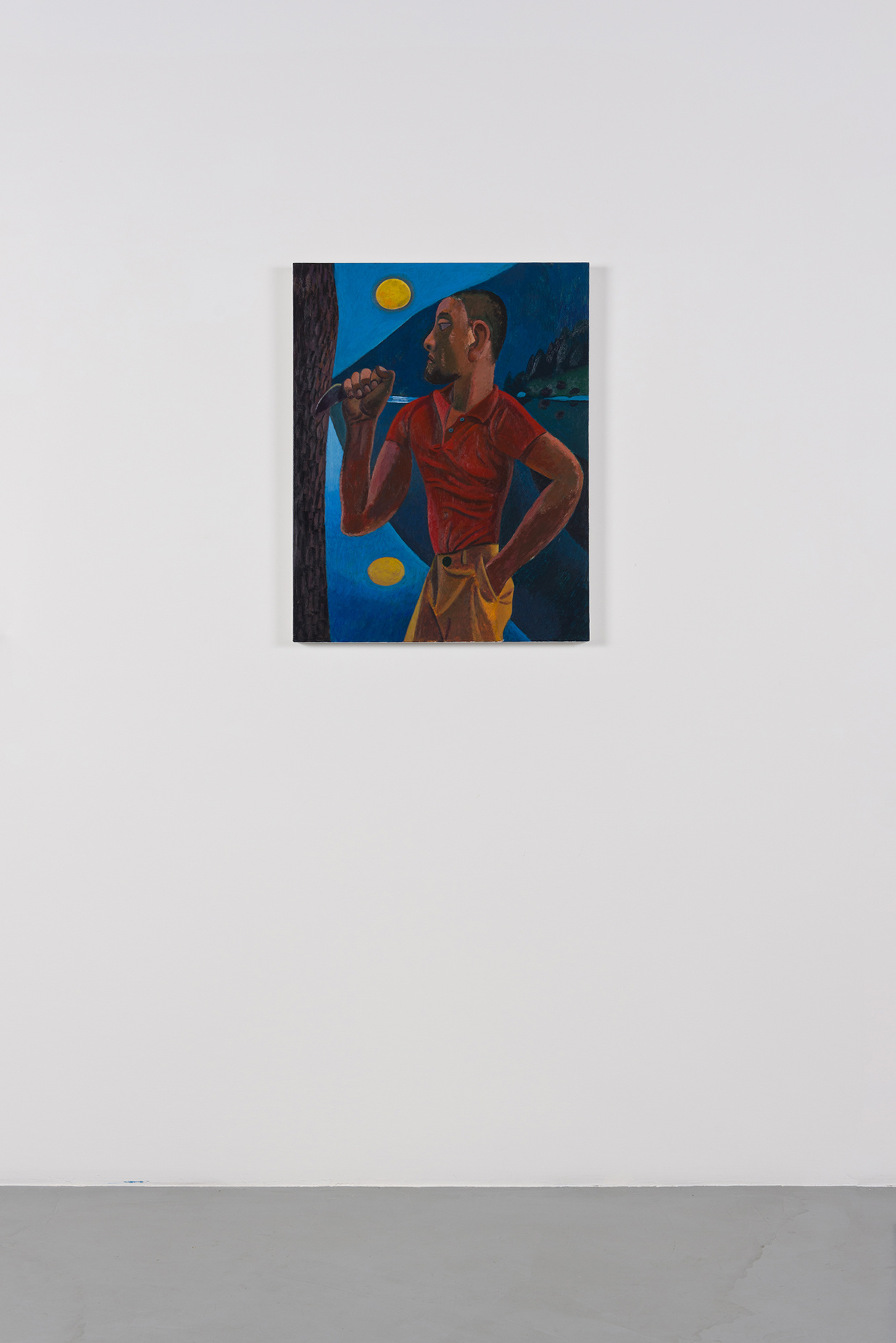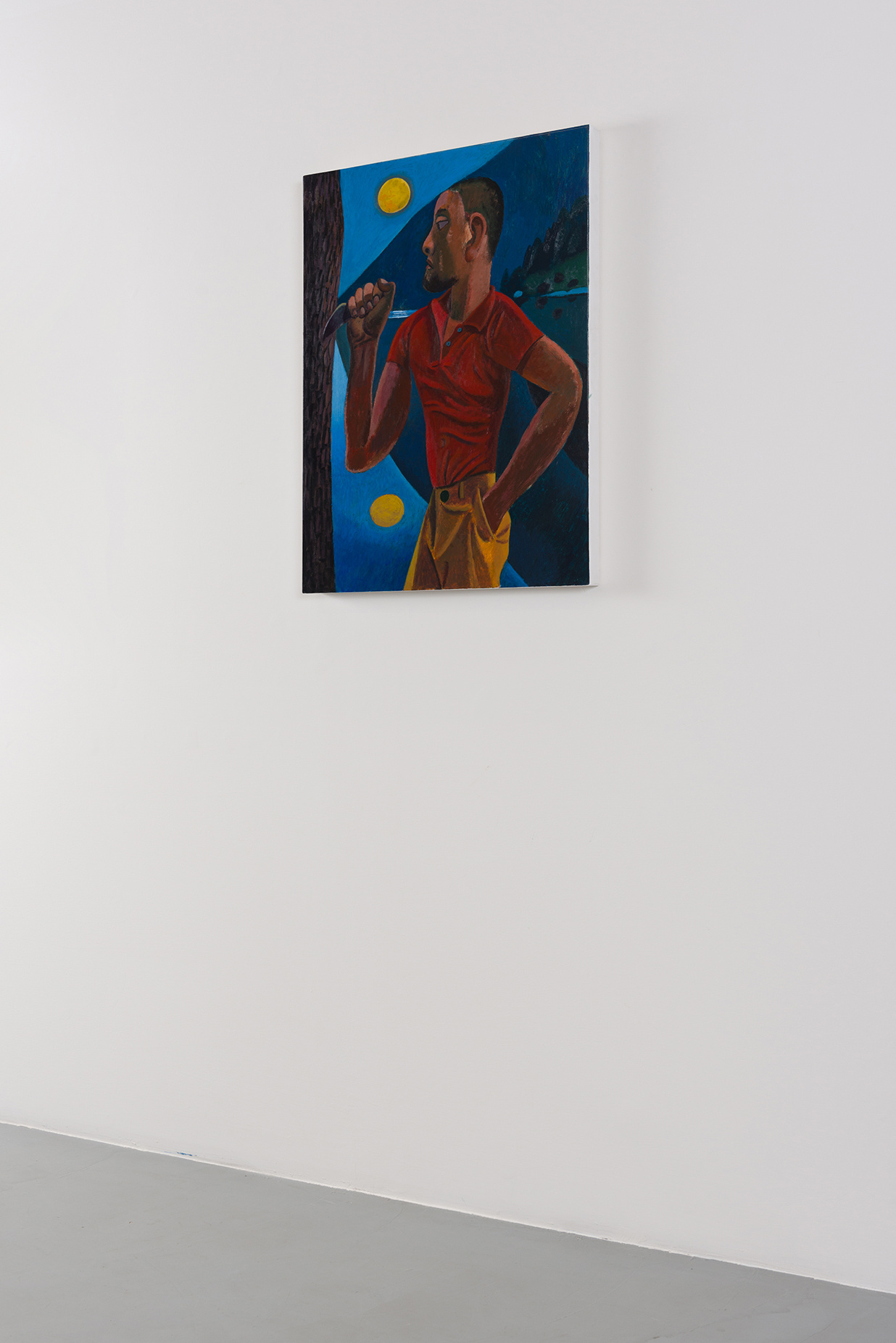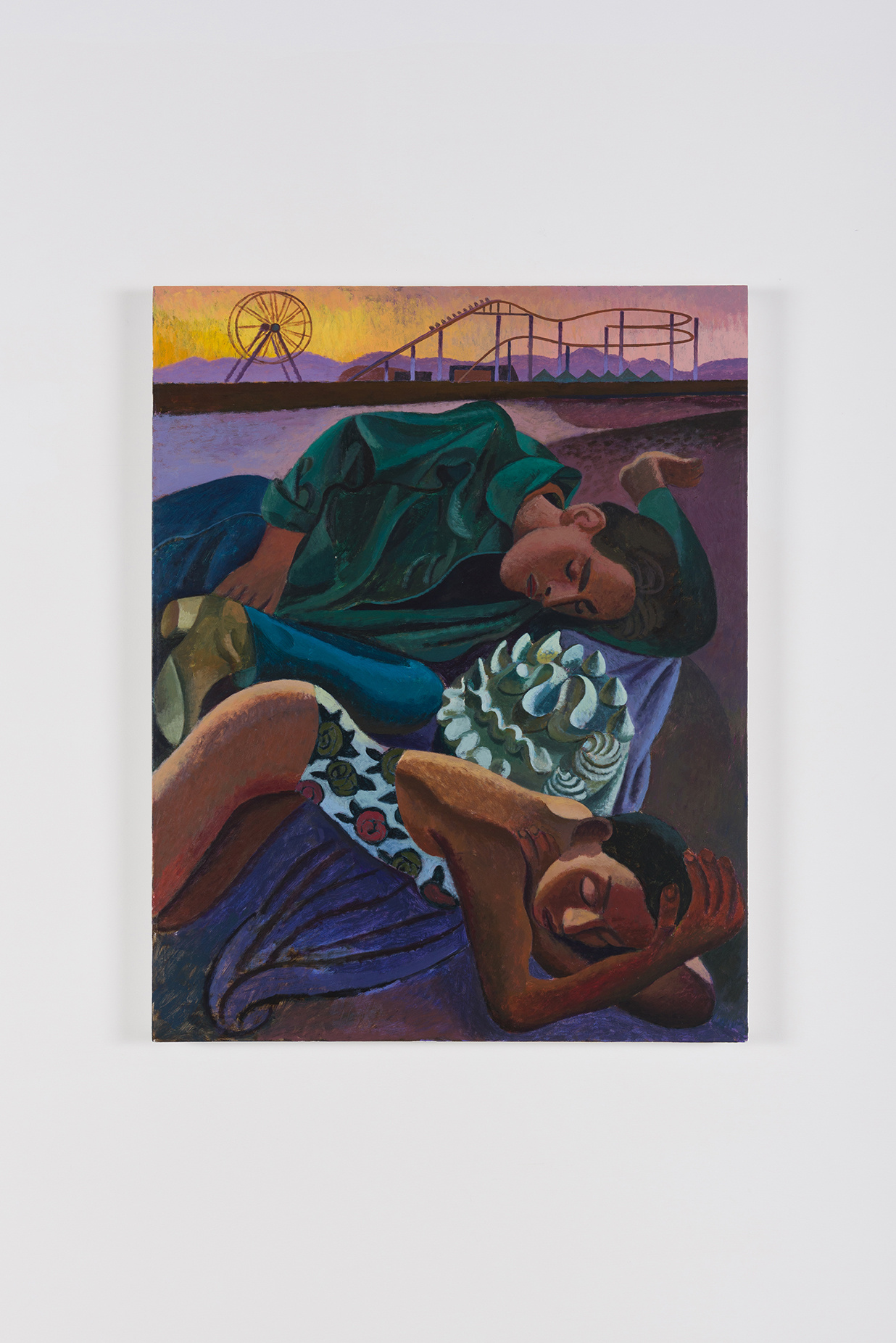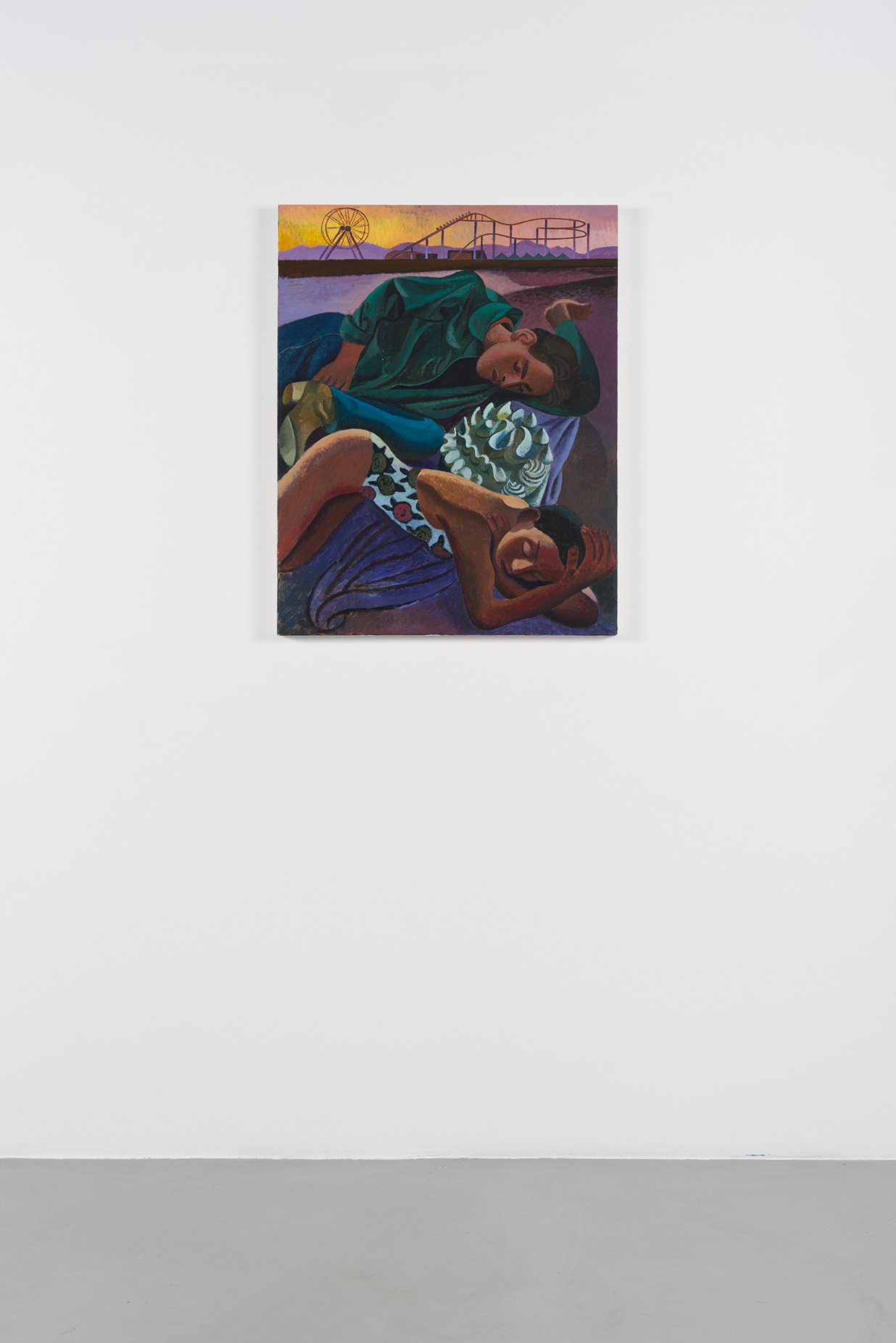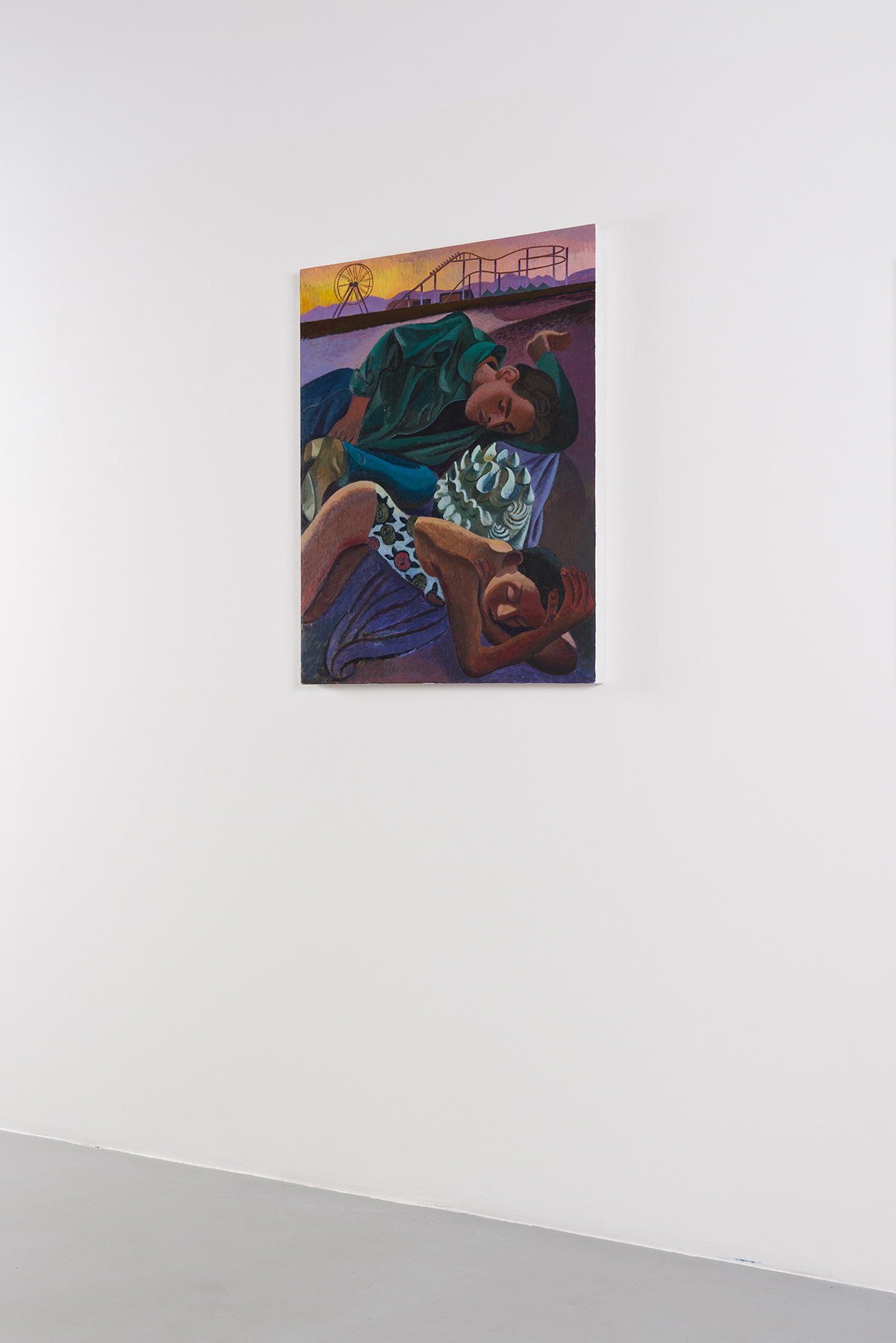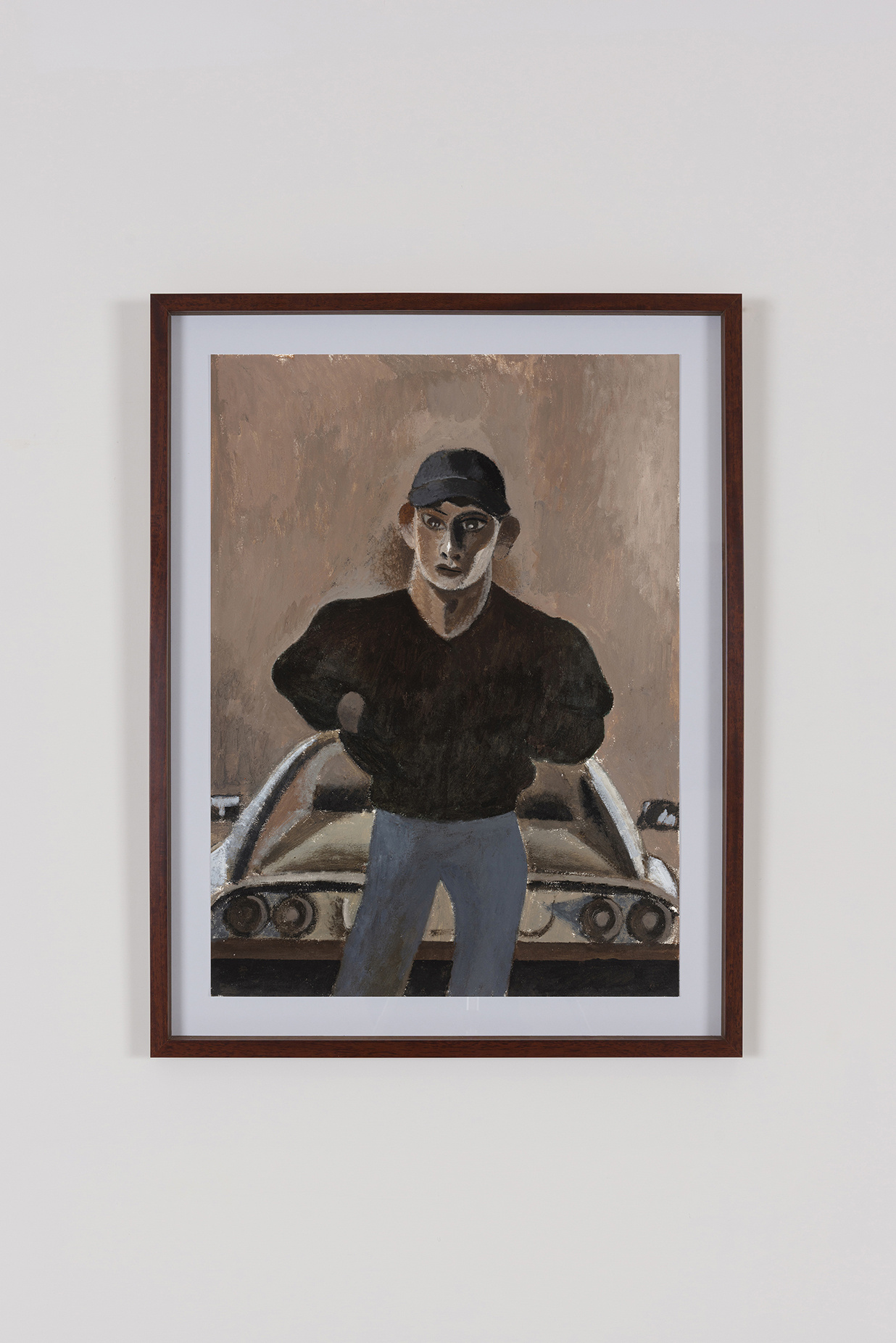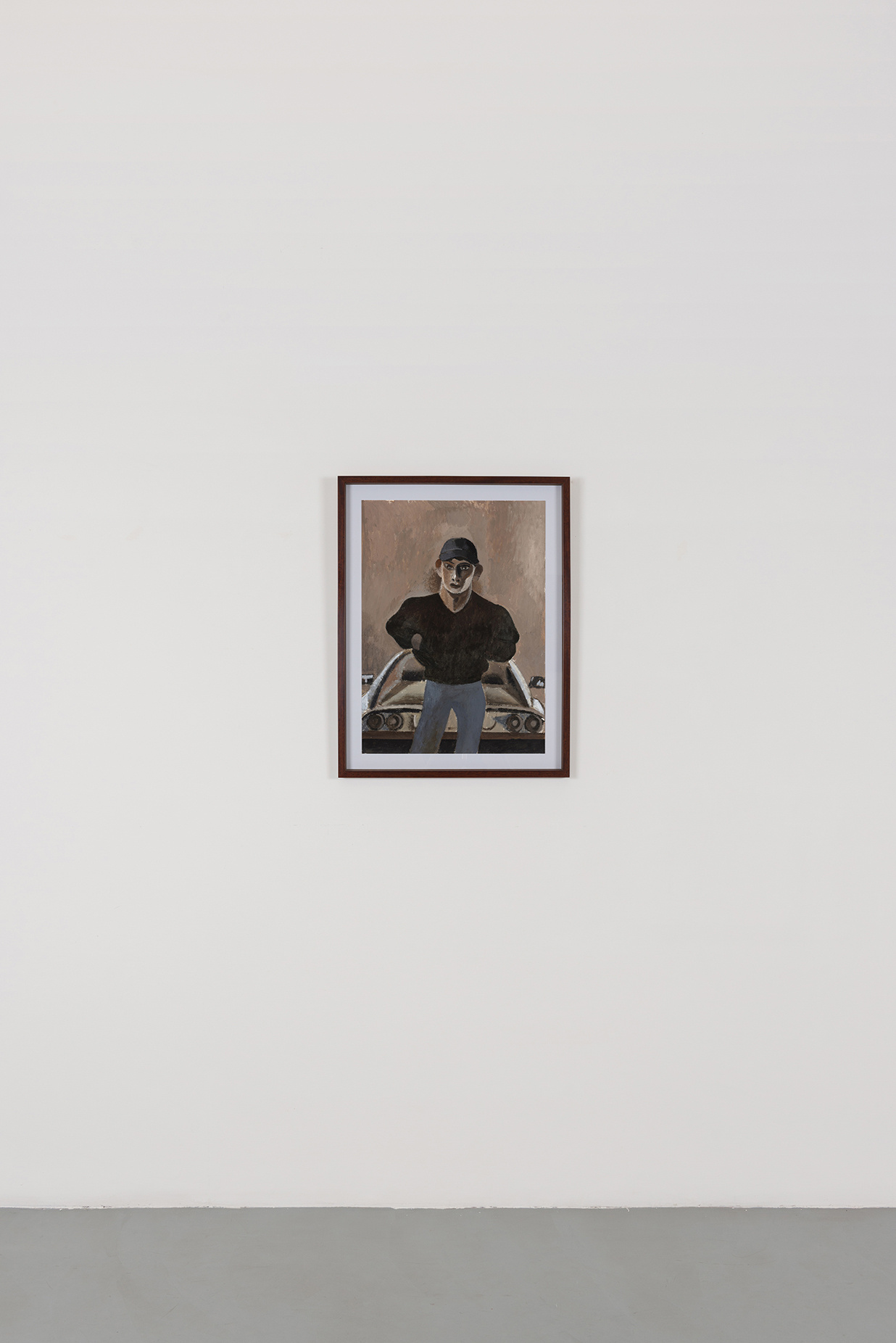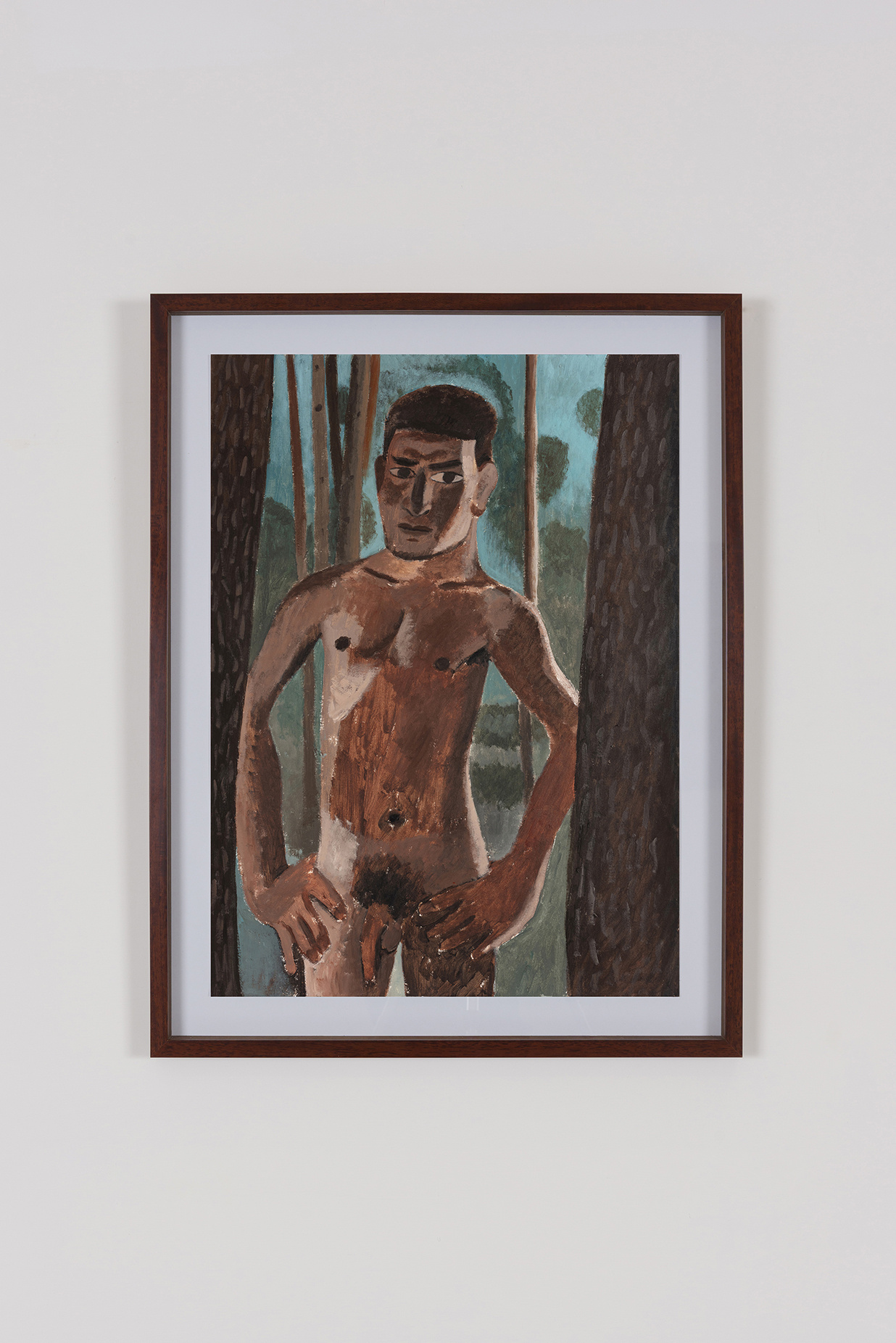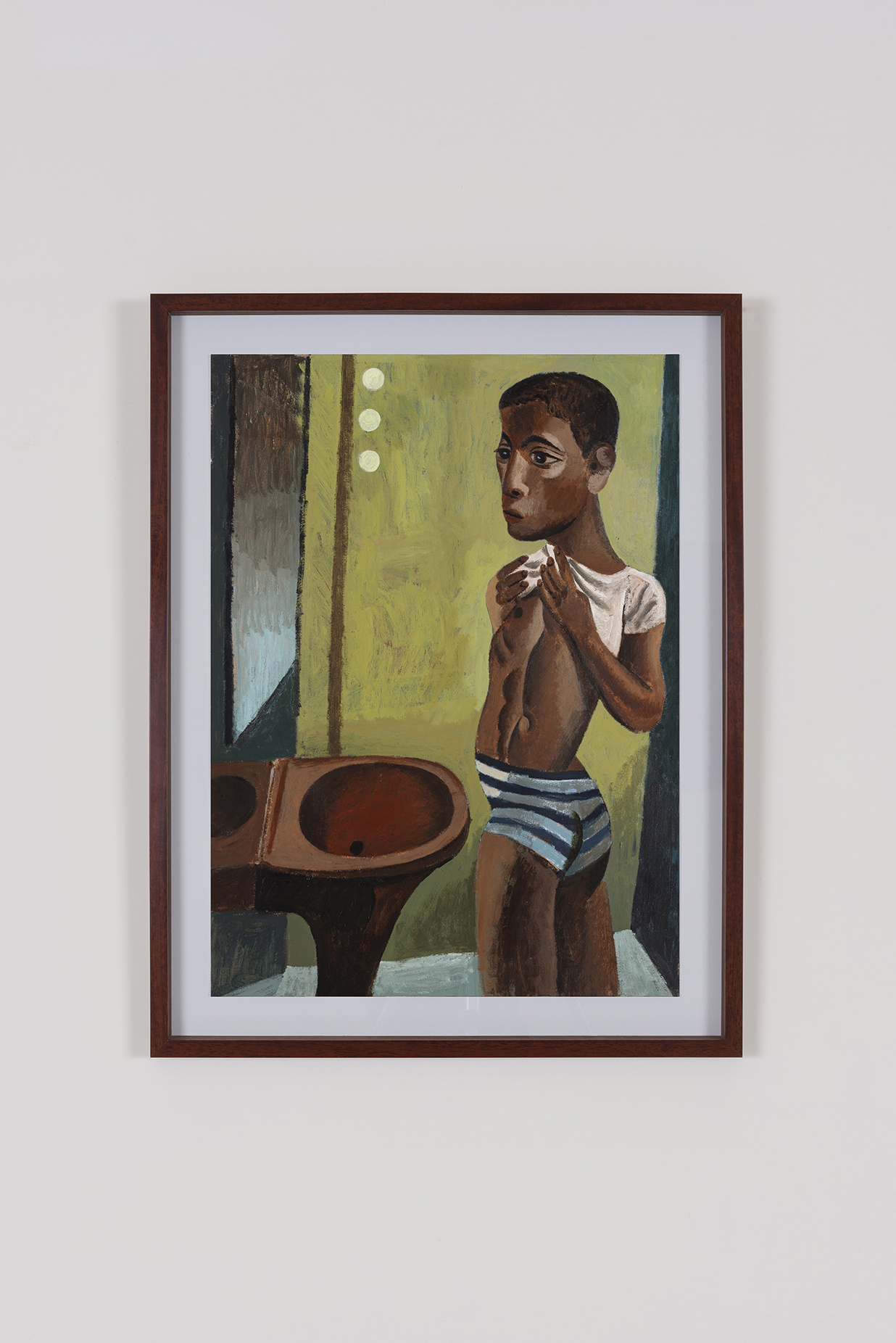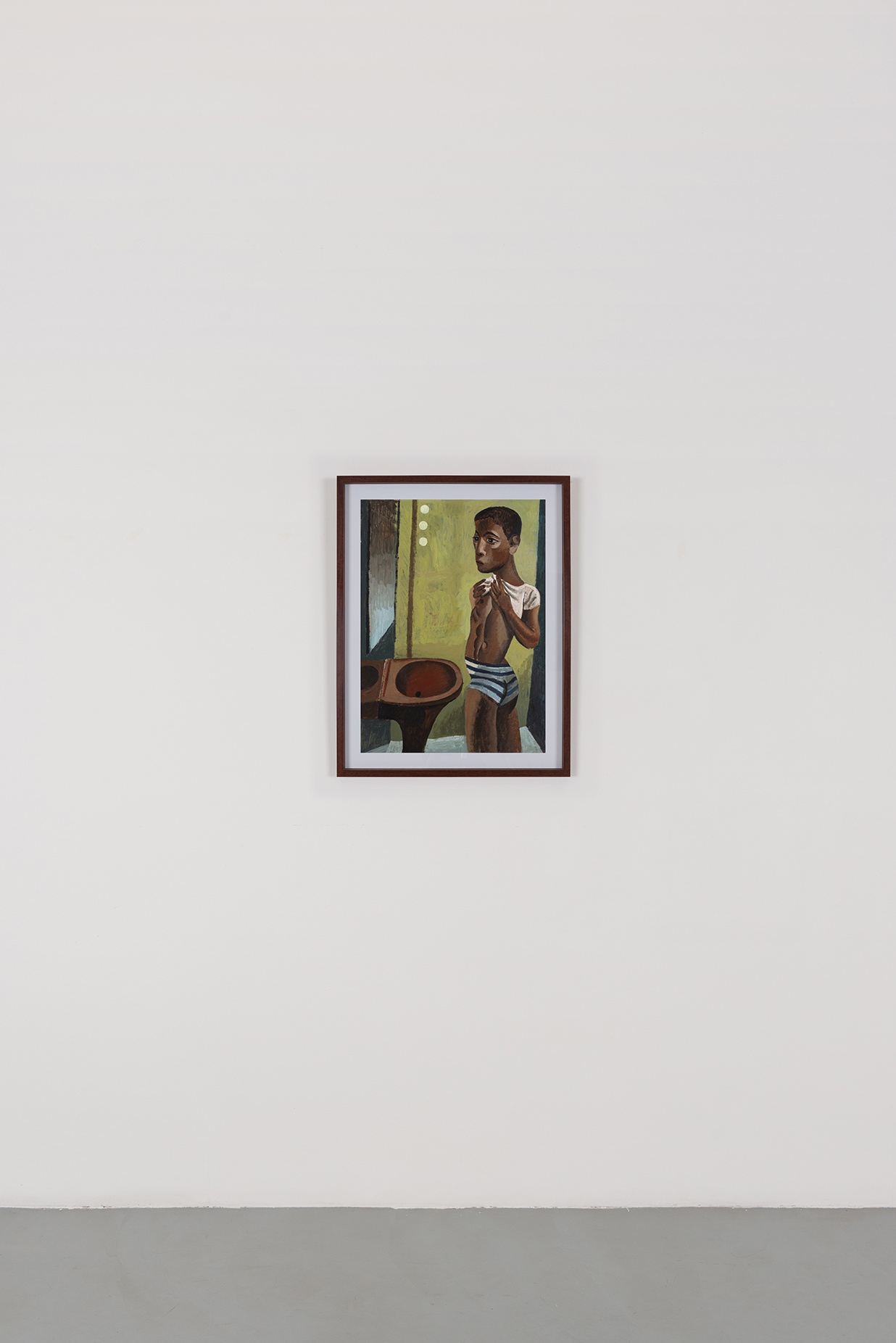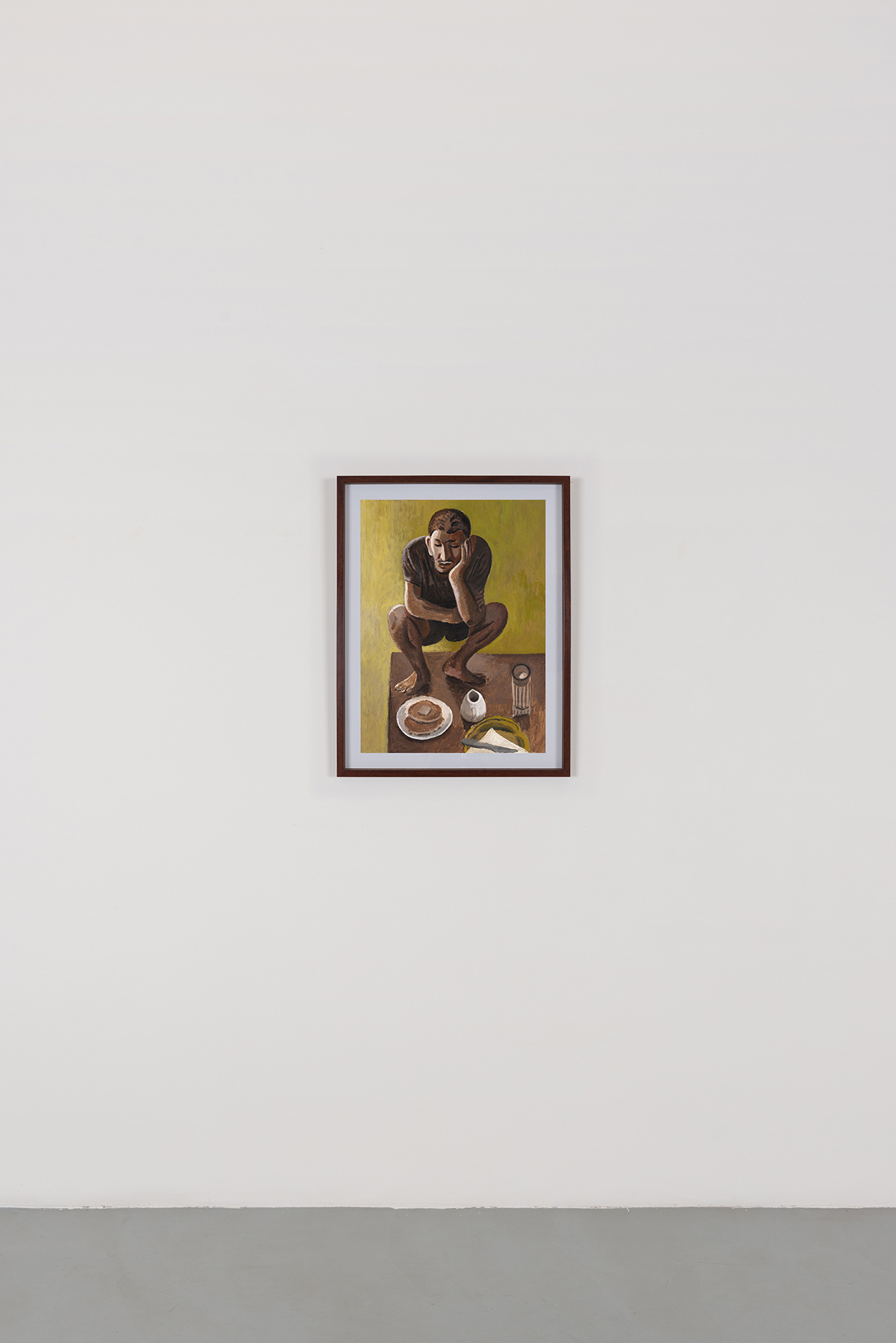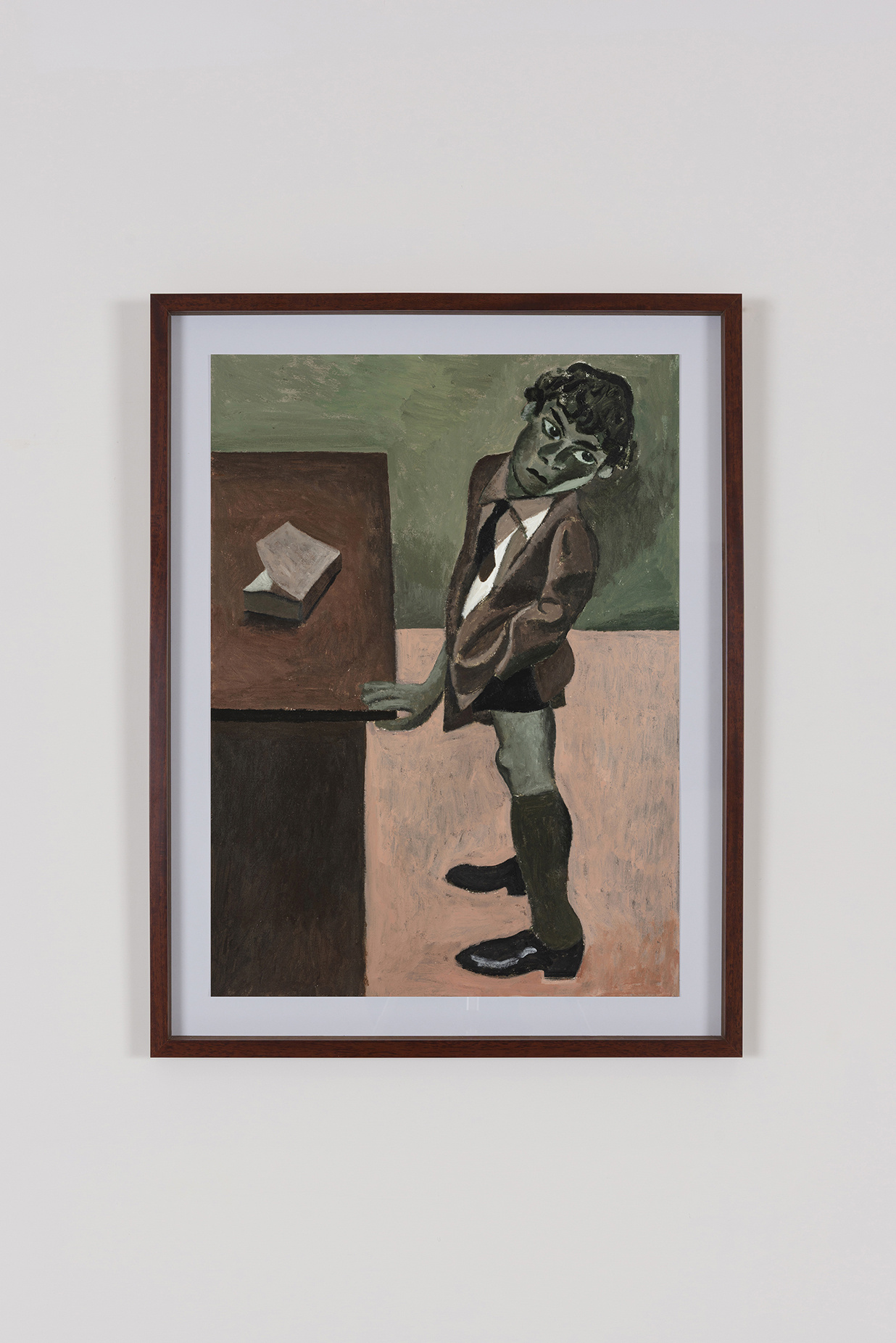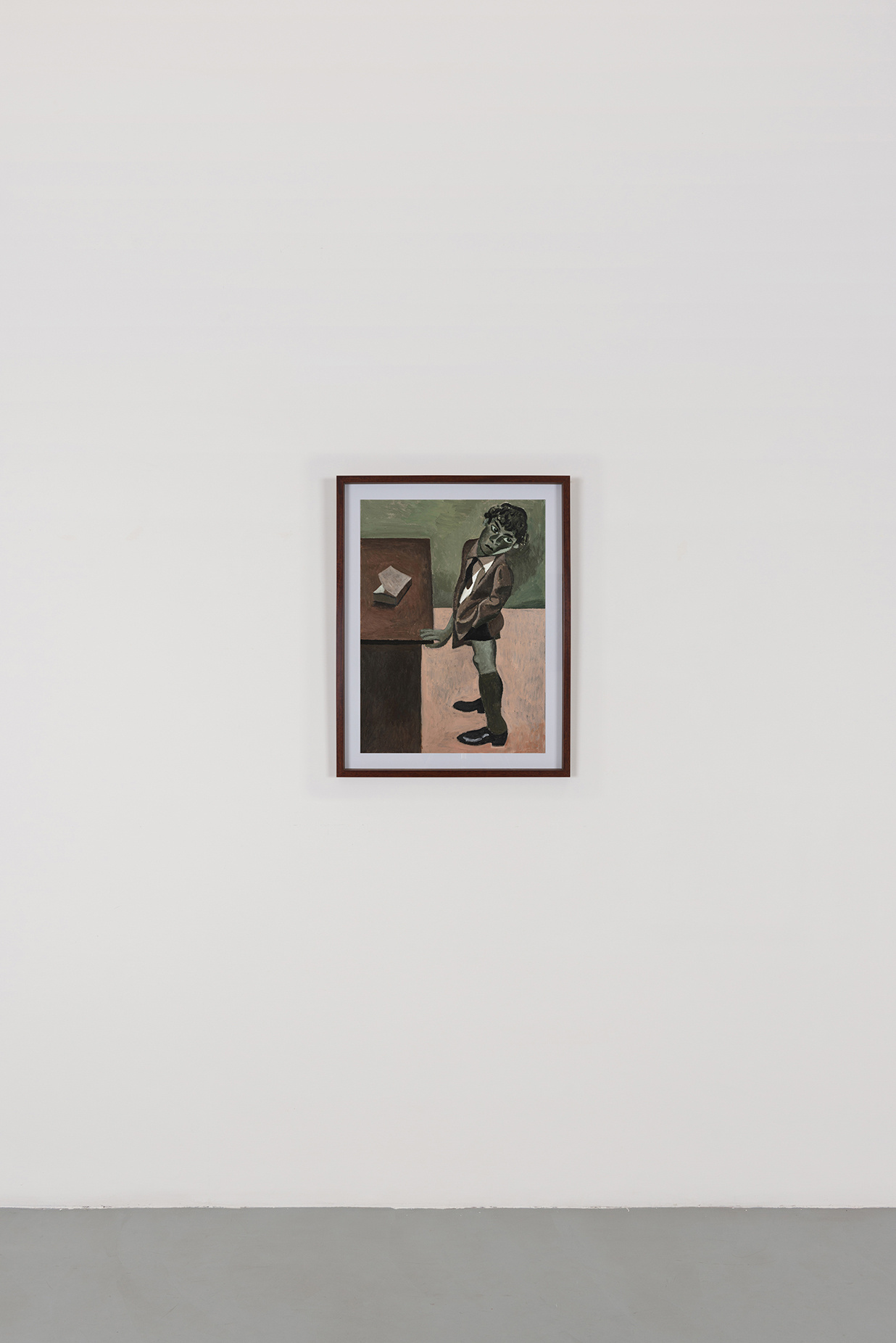Khakshoor’s artistic practice encompasses various subjects, but it is his deep exploration of the male experience – marked by complexities and vulnerabilities – that defines his work.
The male figures in his paintings stem from a blend of found images, personal memories, and imaginative constructs. This deliberate engagement with visual stimuli shapes his daily drawing practice, leading to artworks that are both playfully tragic and vividly dark.
Khakshoor grew up in Iran, where a segregated schooling system led to a strong all-boys environment marked by a testosterone-driven atmosphere. His move to a co-educational college with male-only dorms further intensified this chaotic dynamic, with frequent violations of societal norms and government hostility towards students exacerbating the instability.
Khakshoor’s artistic vision is further enriched by his early experiences with cinematic portrayals of male tragedy, notably through the works of Orson Welles, Akira Kurosawa, and Laurence Olivier (to name a few), which he encountered on television during his youth (Cinema is still an important fuel and a key influence on his work).
Despite his limited comprehension of these films at the time, they instilled in him an enduring fascination – both obsessive and apprehensive – toward the male identity and its potentialities. This duality pervades his work, inviting audiences to engage with the intricate tapestry of masculinity that he deftly unravels.
Over time, and in recent development, Khakshoor’s practice explores deeply the notion of narration and storytelling in portraiture. What is depicted in the new set of works is not auto-fictional nor autobiographical. It is purely imaginative.
With this simple title the artist is expressing the common idea about “getting the Itch to do / for something”.
Metaphorically, giving echoes to having an urge to do something. The meaning of the title also refers to the idea of temptation. That temptation that is visible, for the artist himself, over his new compositions: all those individuals seem to be tempted to do something.
For the present exhibition, the artist represented a gallery of vanguard and stylish characters, sharing the same present and the same world, who are part of their own stories. At the first glance, what matters the most for Morteza Khakshoor, is to create an image, to compose it: the joy of creating a specific staging process.
The mystery and the second level of meaning stand in the fact that those scenes are floating in the middle of another existing narrative wherein the characters possess their own freedom out of the frame, out of the limit of the painting, an off-screen life.
A movement that exists before and after being captured on the canvas.
He always uses drafts and sketches as a starting point. While drawing, the artist responds to certain faces, or body languages emanated by the characters. A set of elements that he finds appealing and interesting to treat.
Through them, the artist is treating universal topics such as love, melancholy, passion, daydreaming or contemplation. (VVB)
Read less
Khakshoor’s artistic practice encompasses various subjects, but it is his deep exploration of the male experience – marked by complexities and vulnerabilities – that defines his work.
The male figures in his paintings stem from a blend of found images, personal memories, and imaginative constructs. This deliberate engagement with visual stimuli shapes his daily drawing practice, leading to artworks that are both playfully tragic and vividly dark.
Khakshoor grew up in Iran, where a segregated schooling system led to a strong all-boys environment marked by a testosterone-driven atmosphere. His move to a co-educational college with male-only dorms further intensified this chaotic dynamic, with frequent violations of societal norms and government hostility...
Read more
